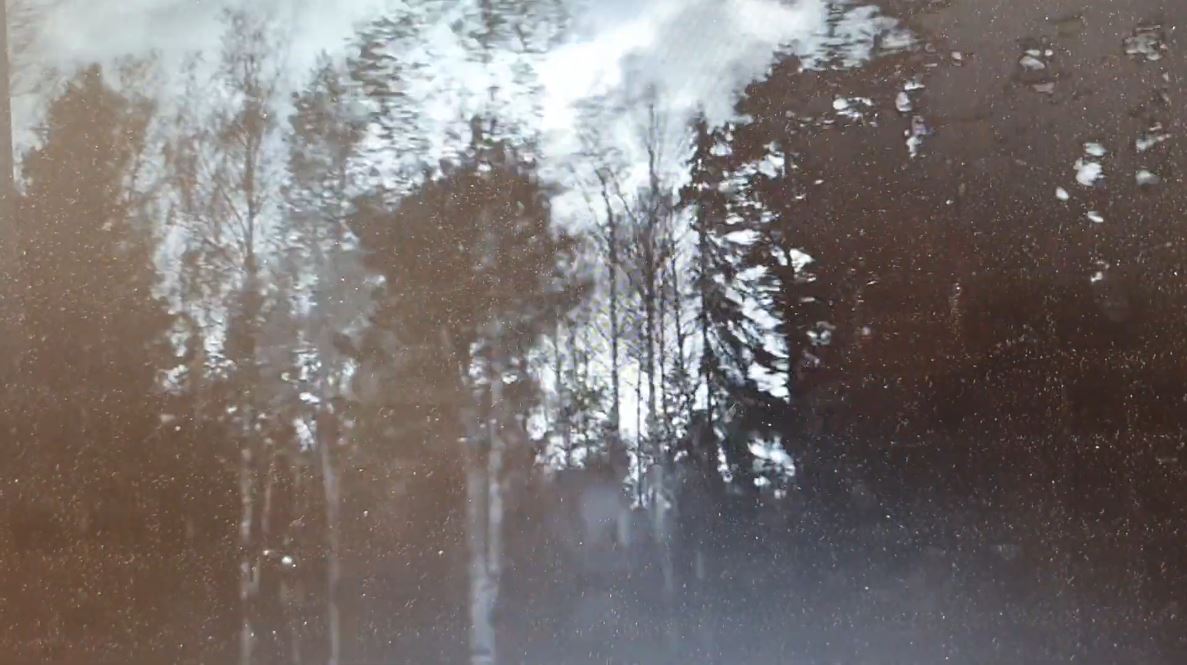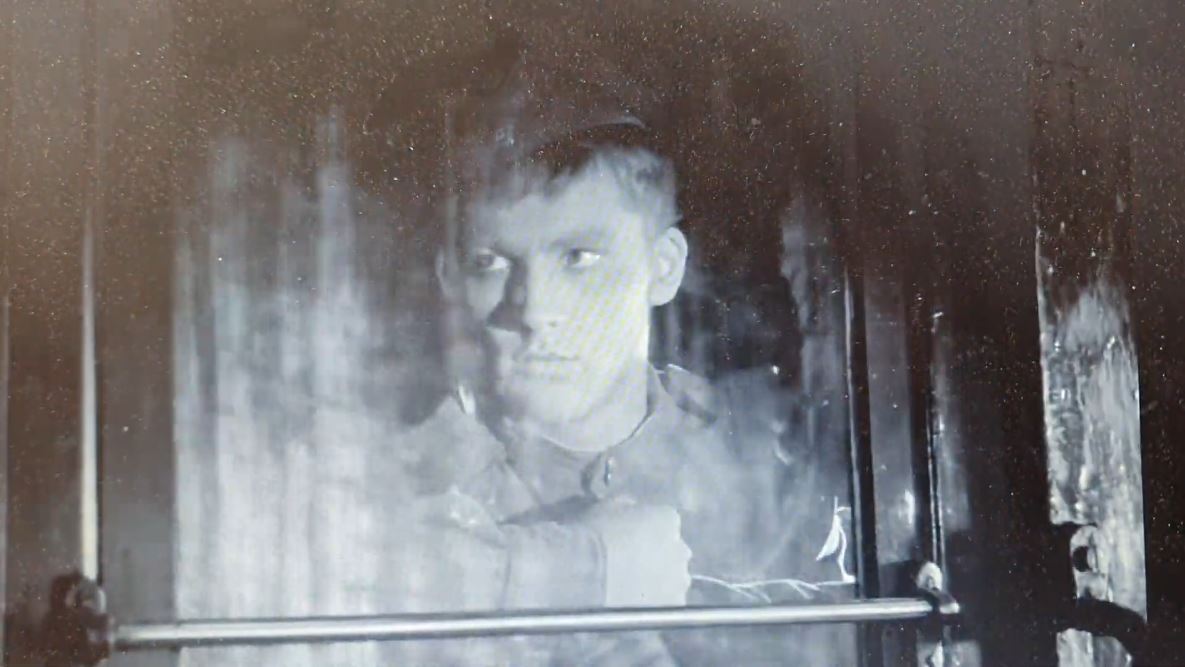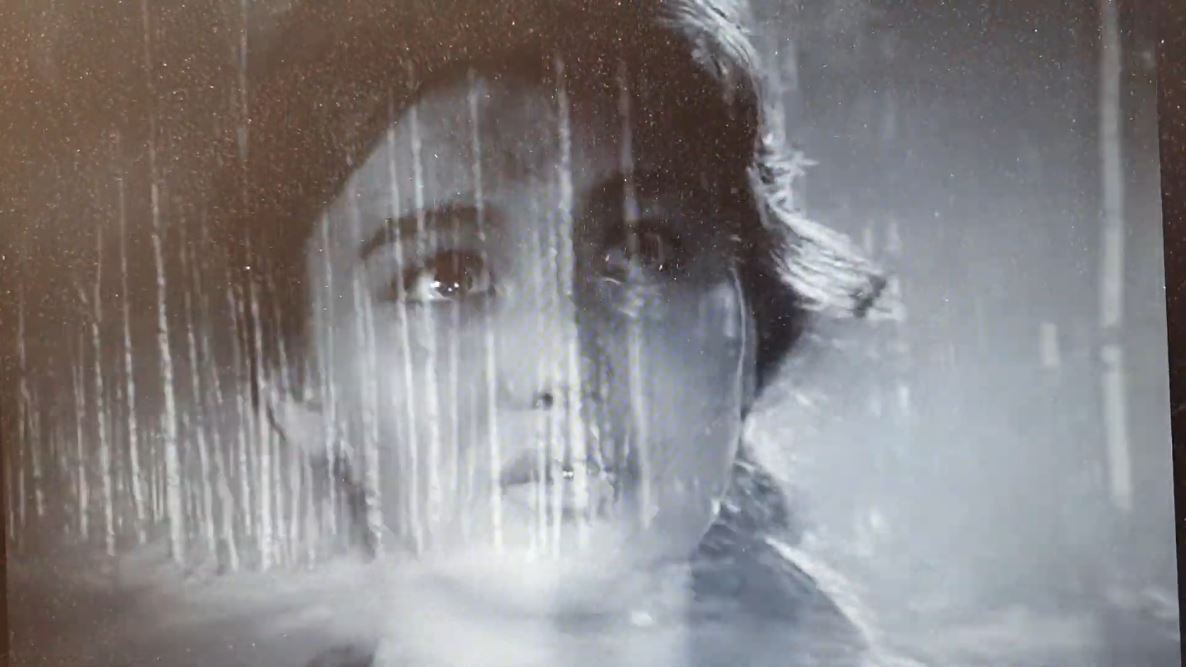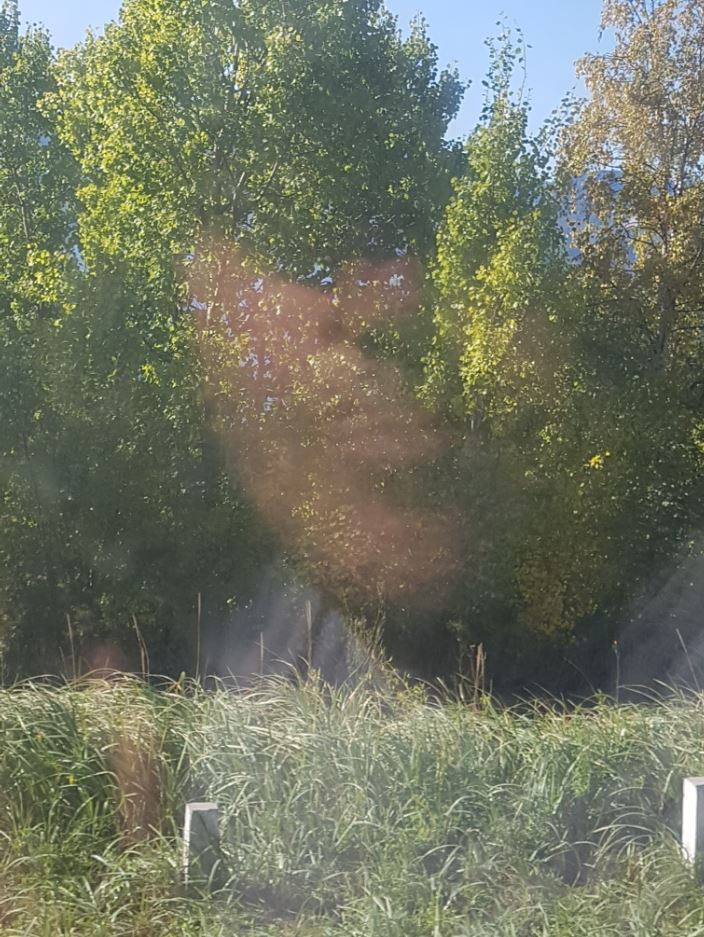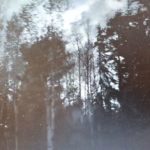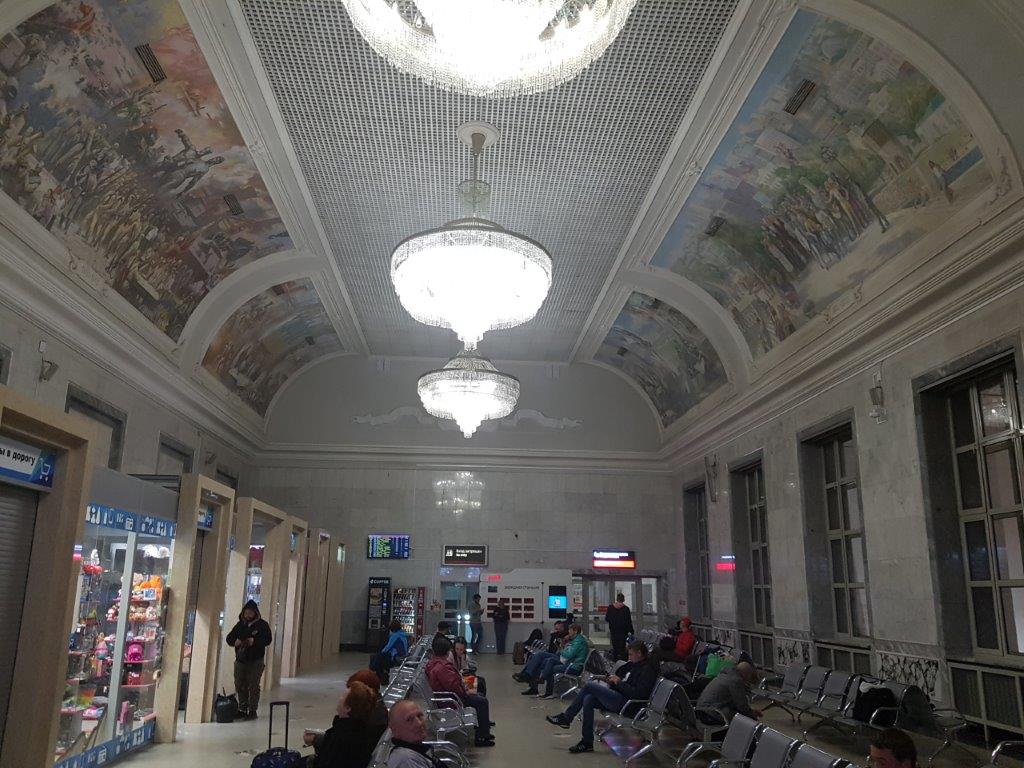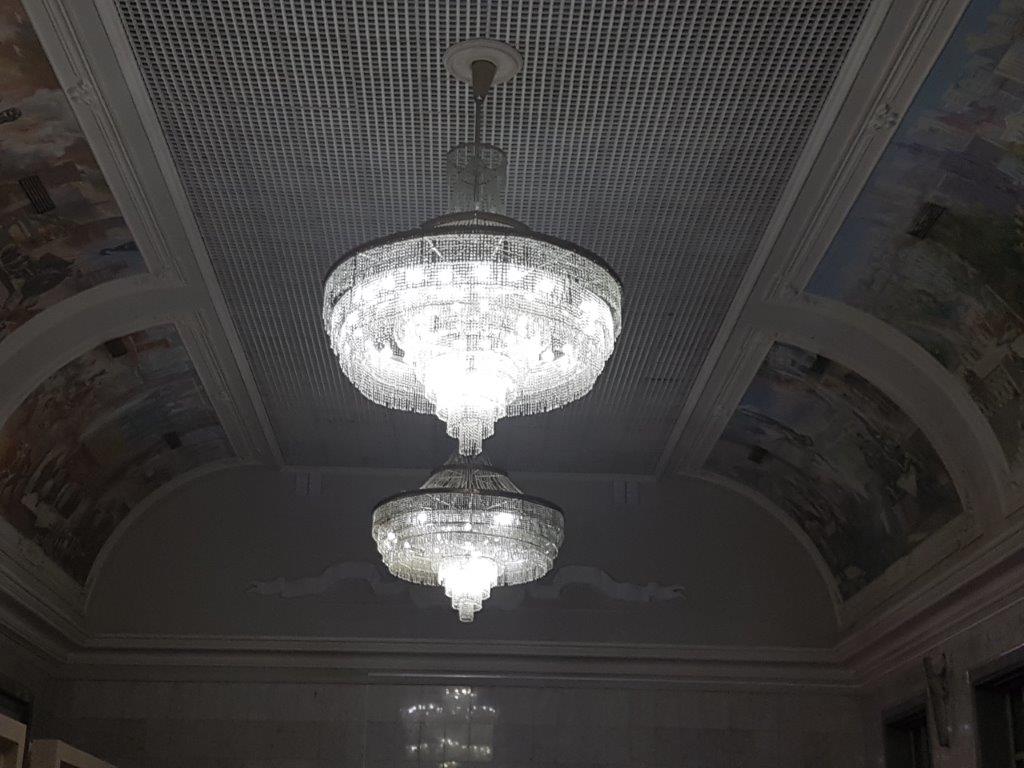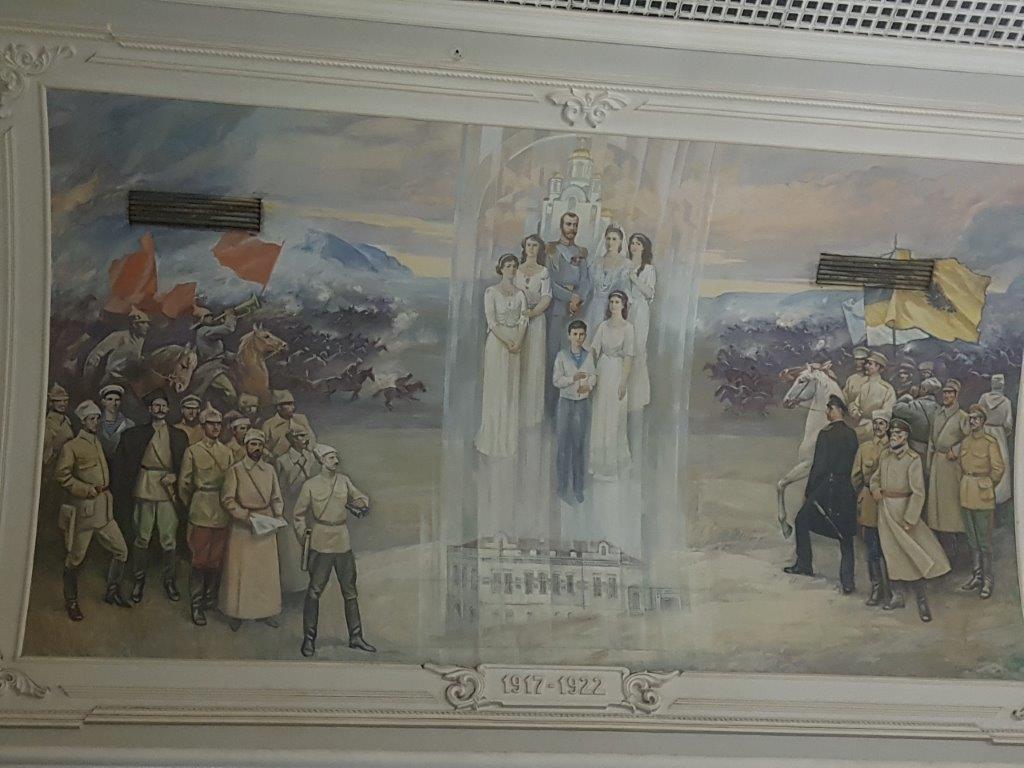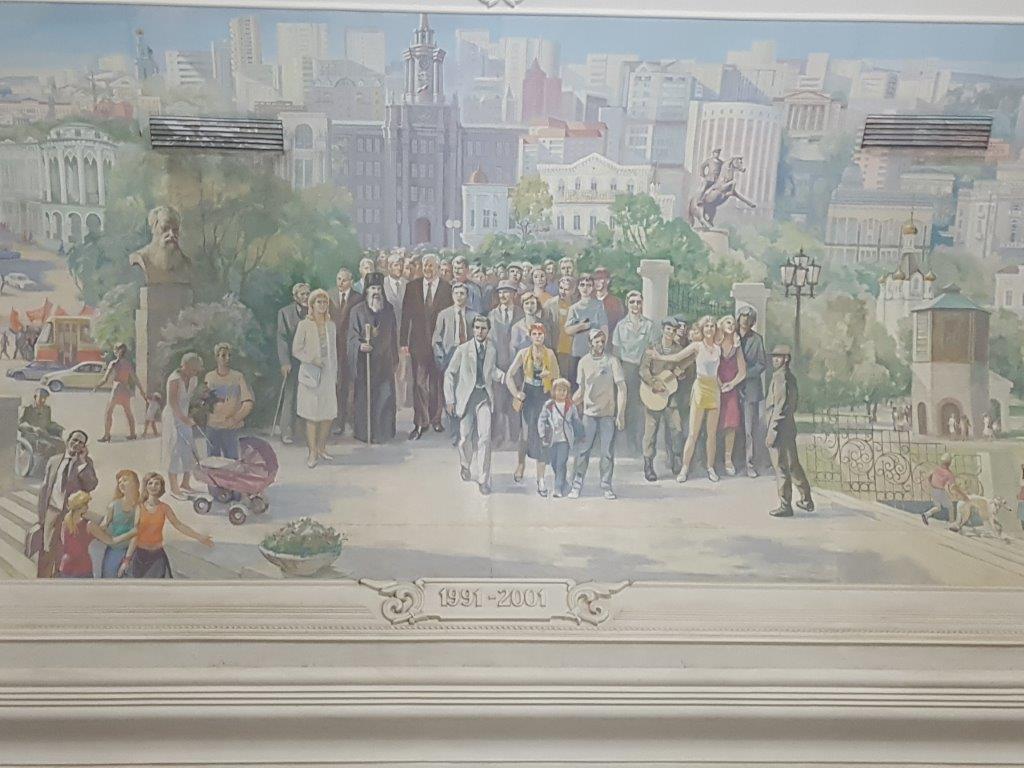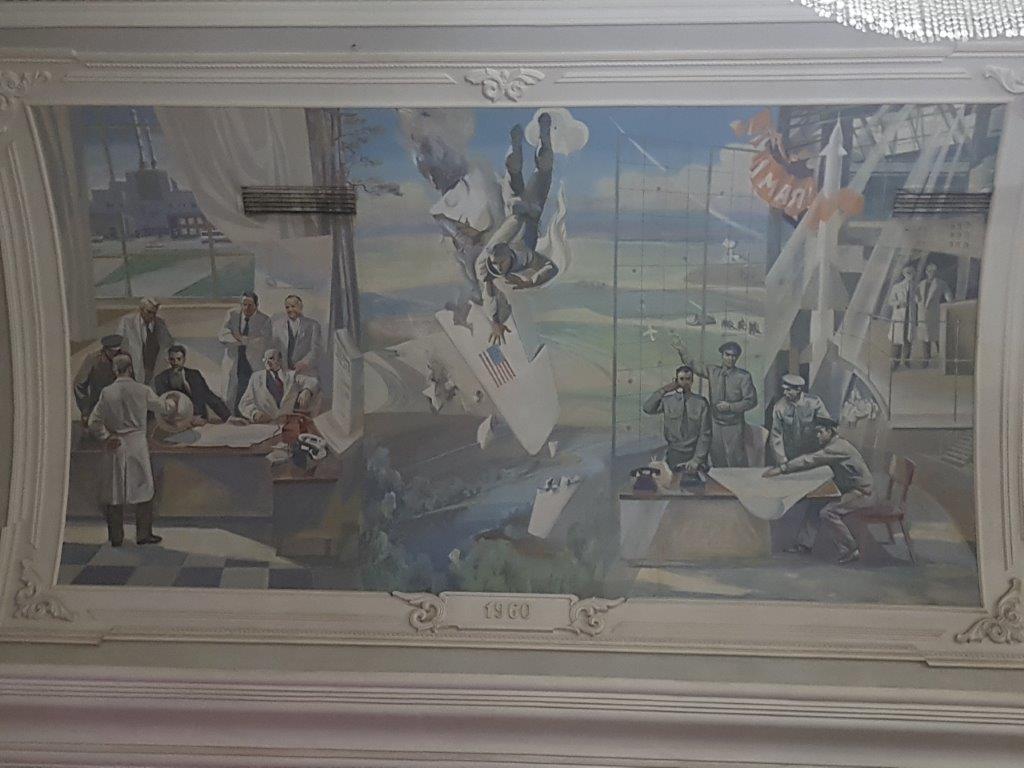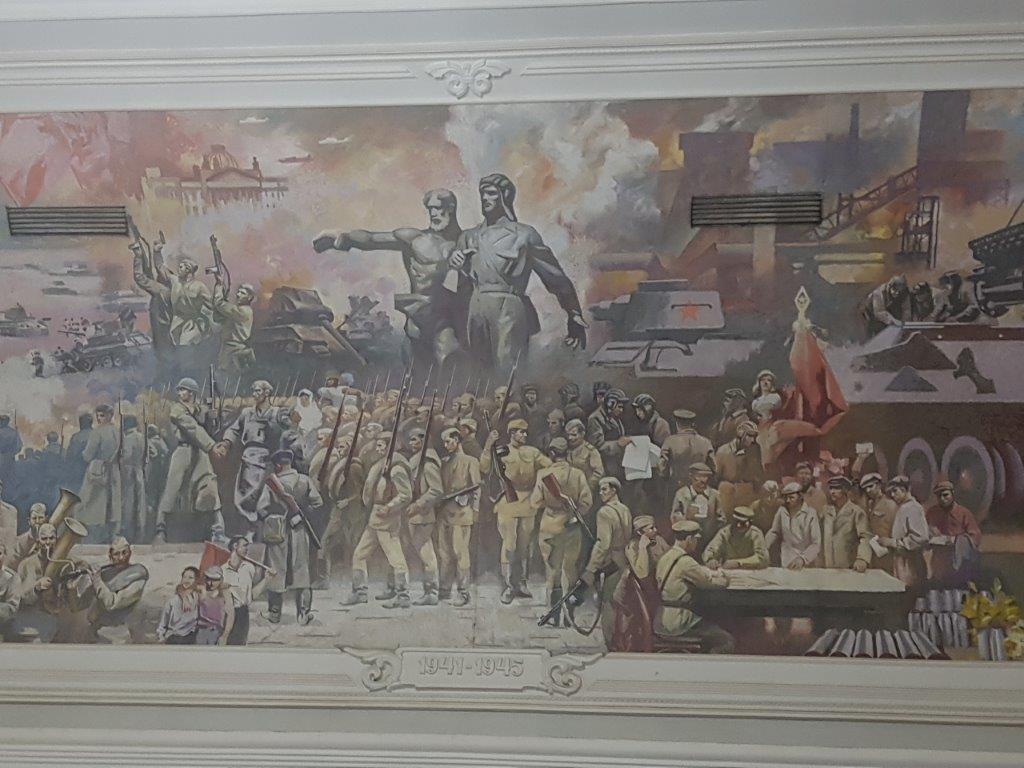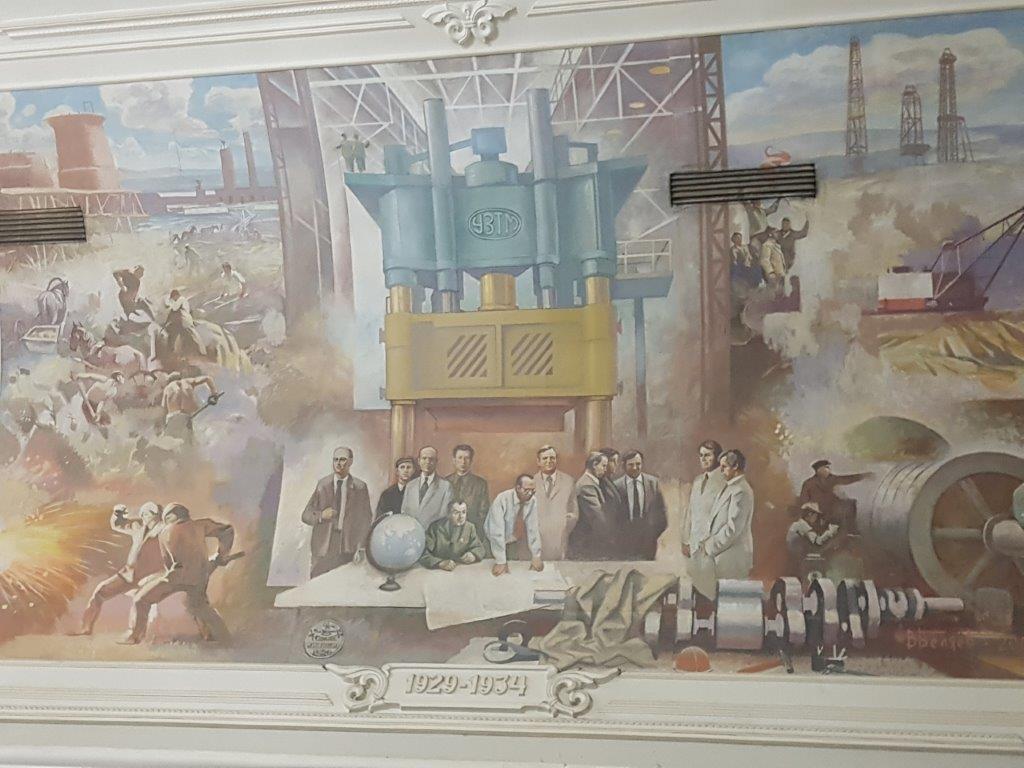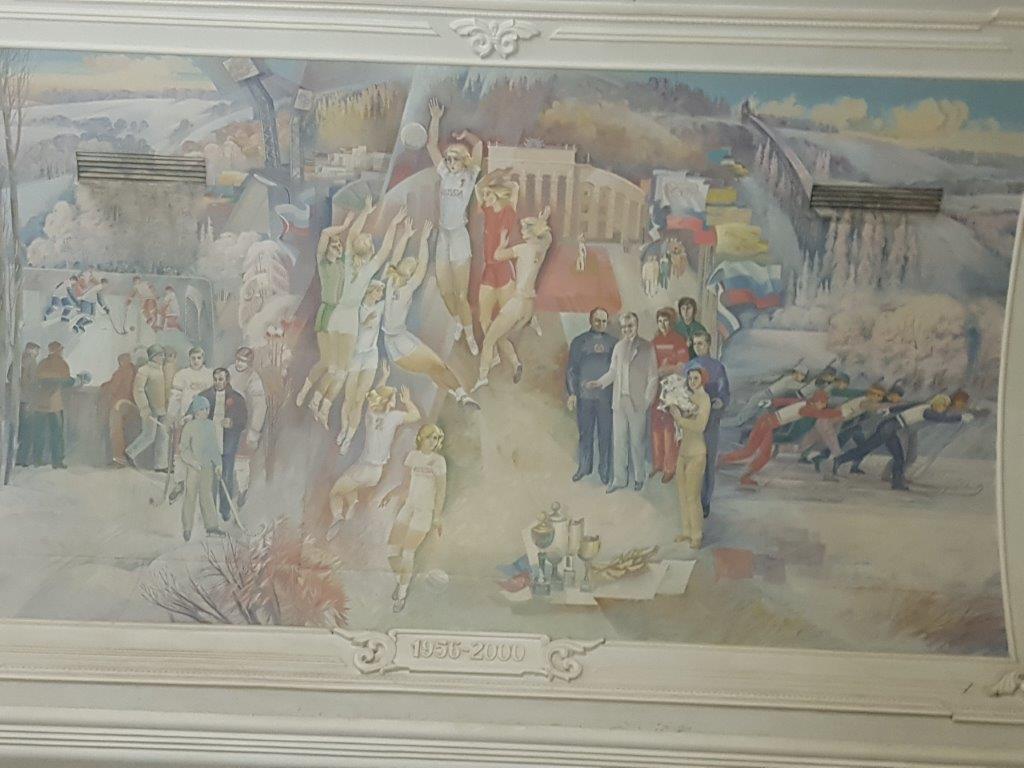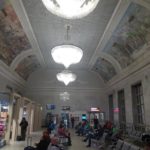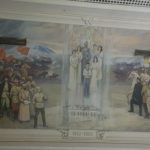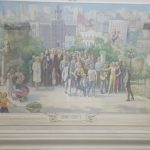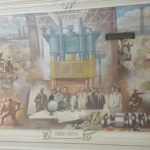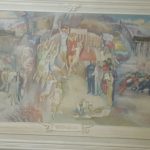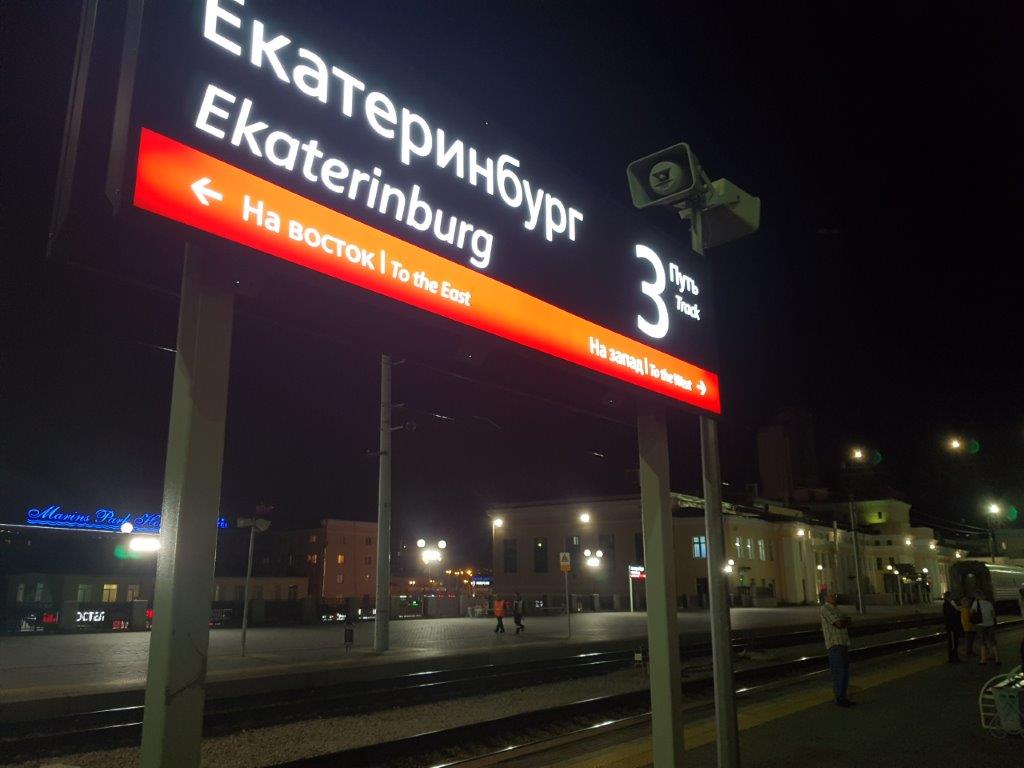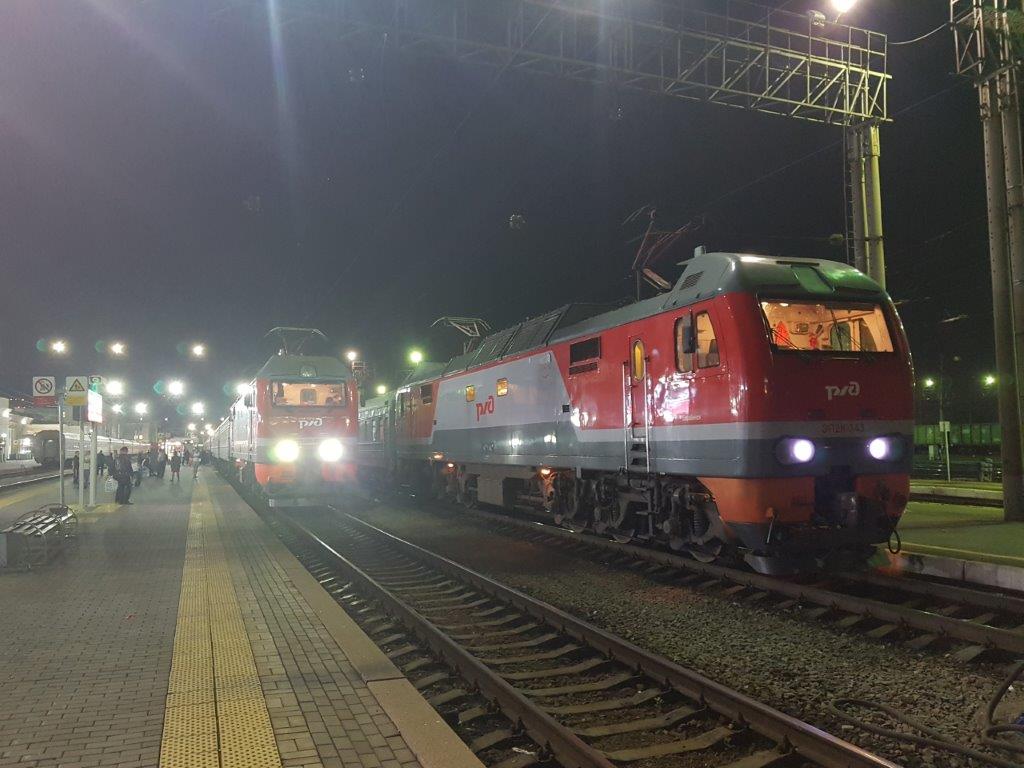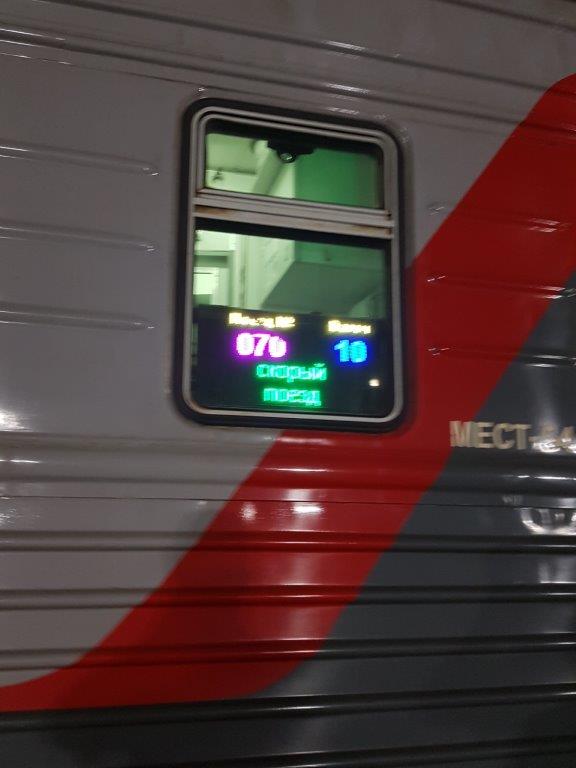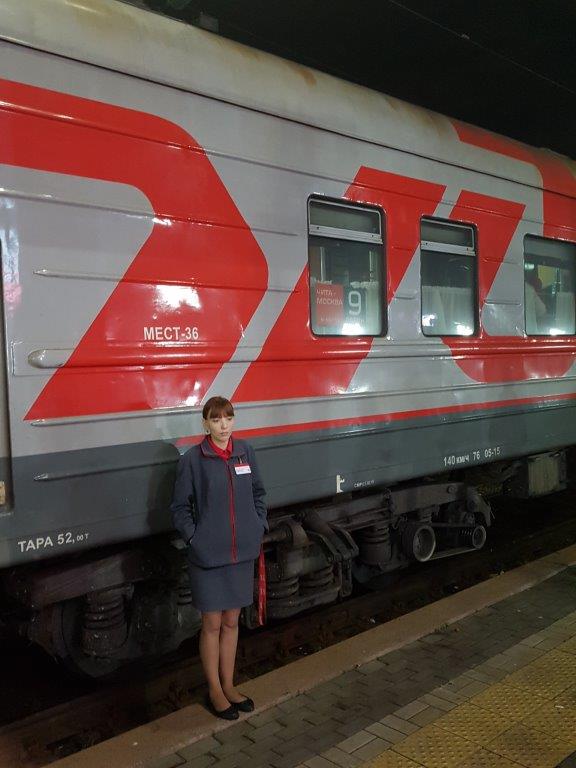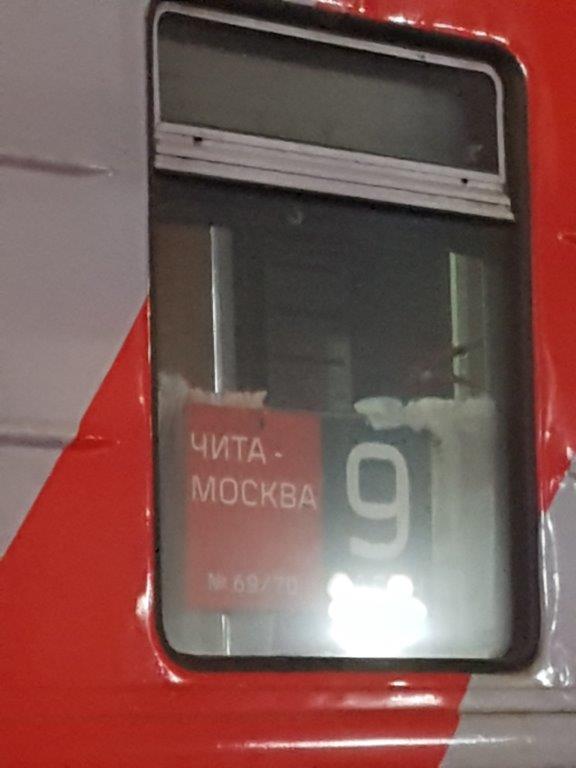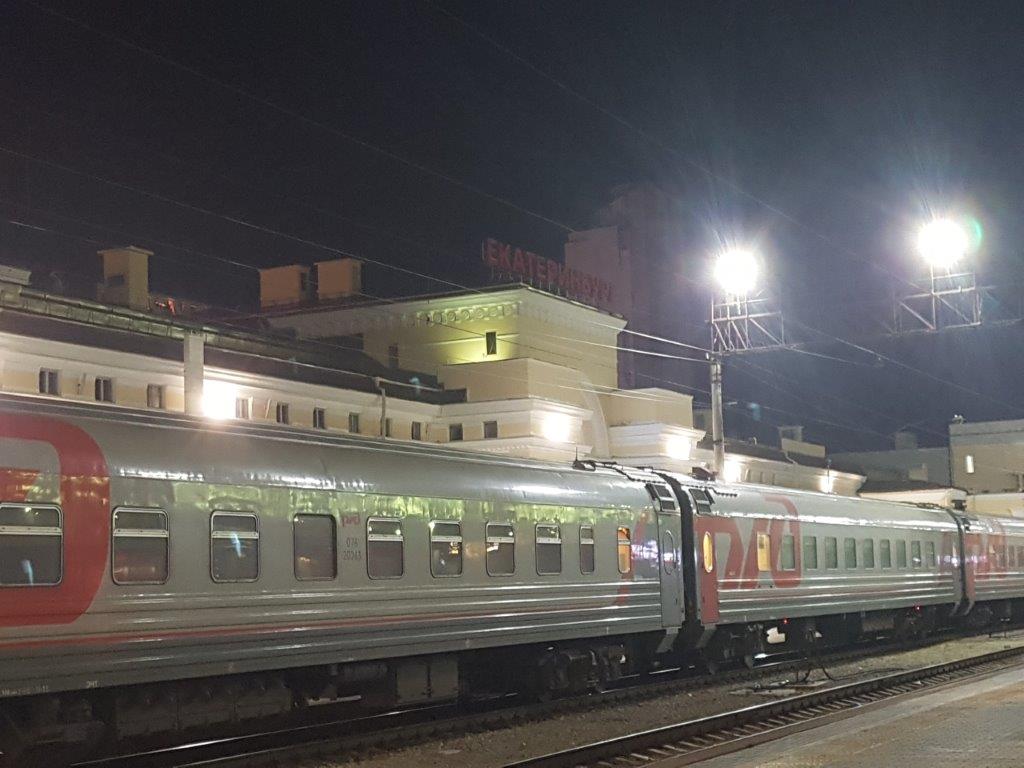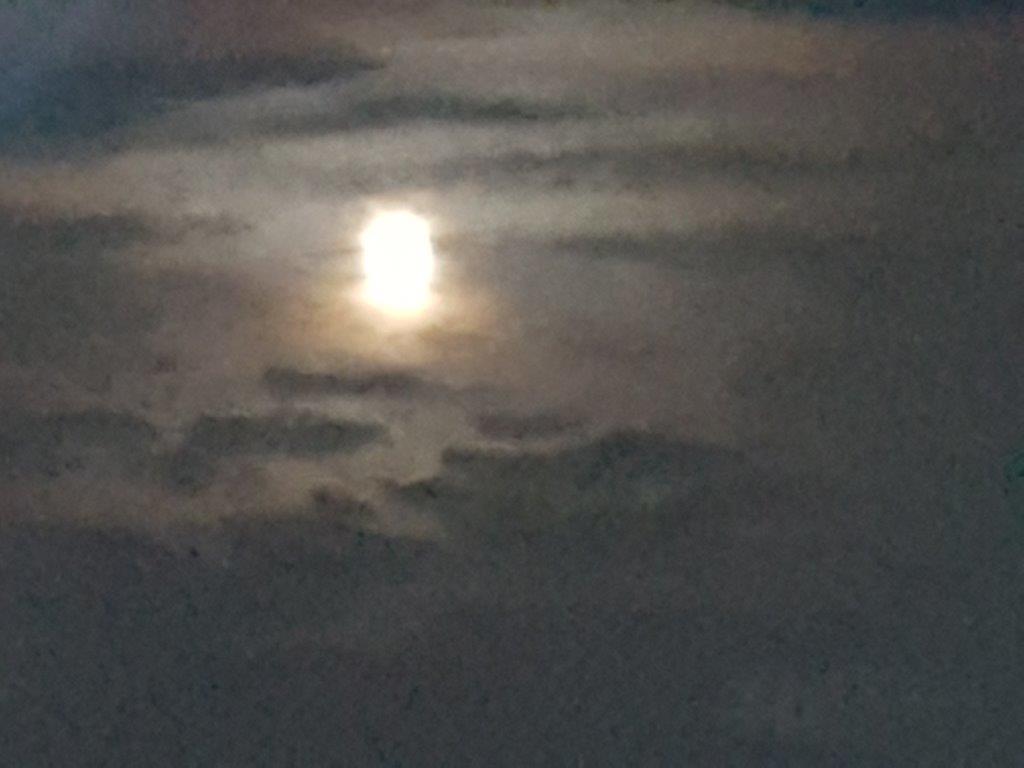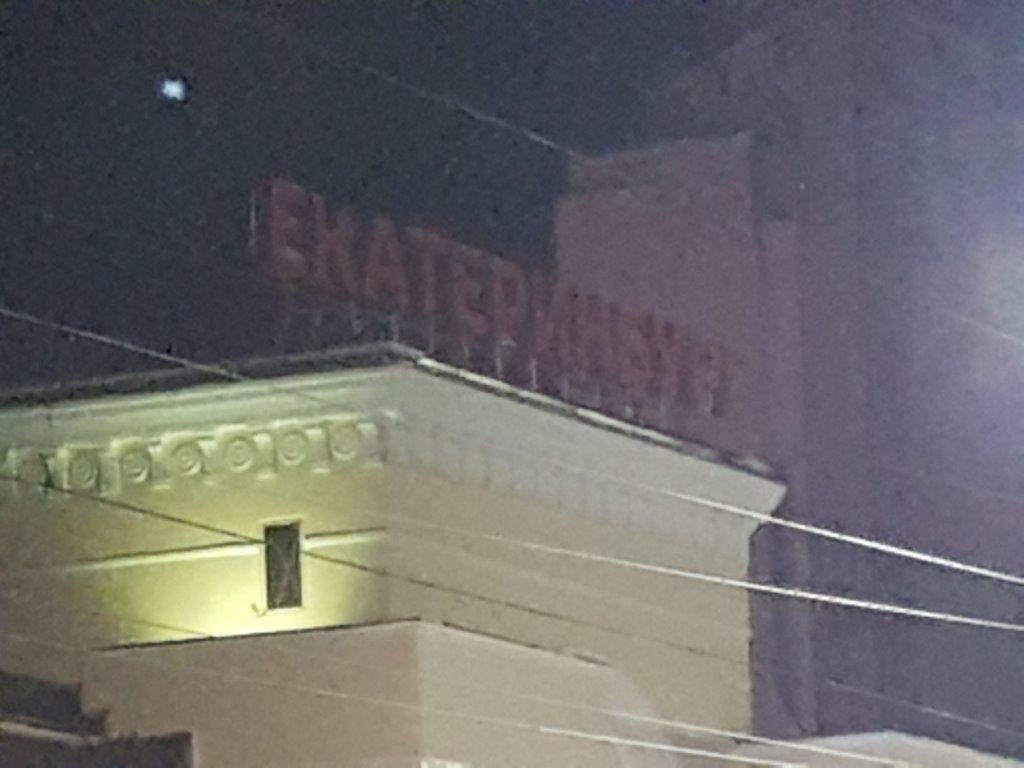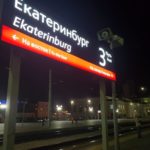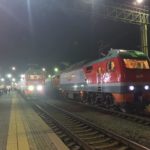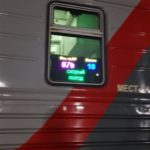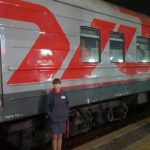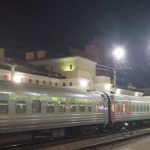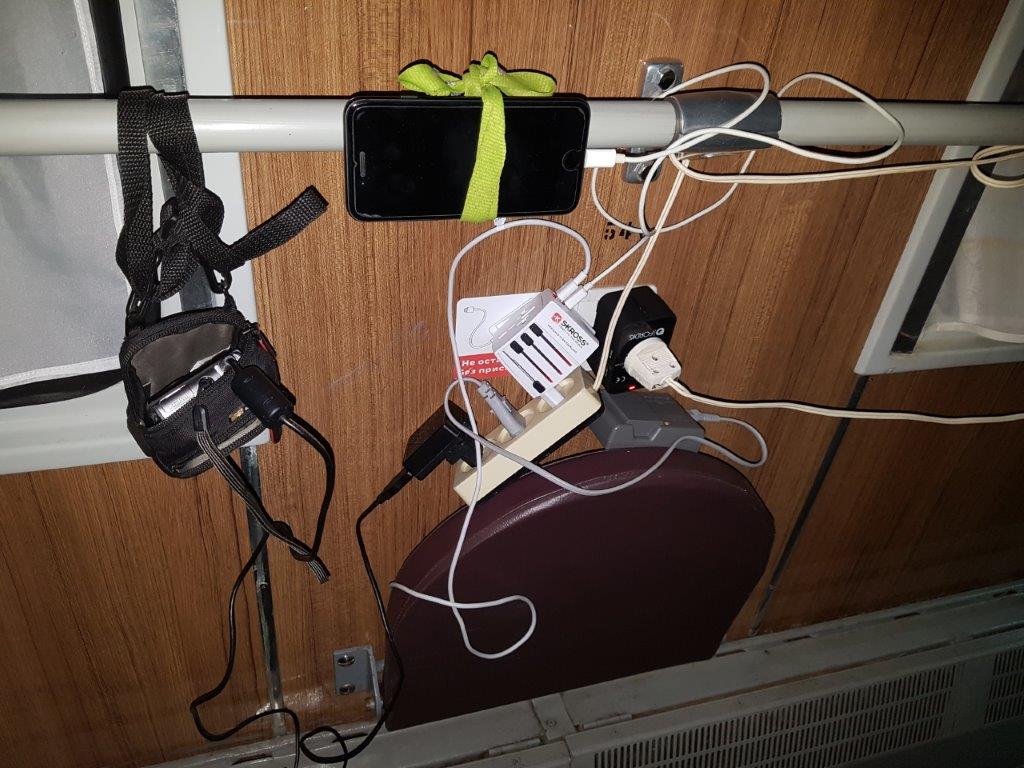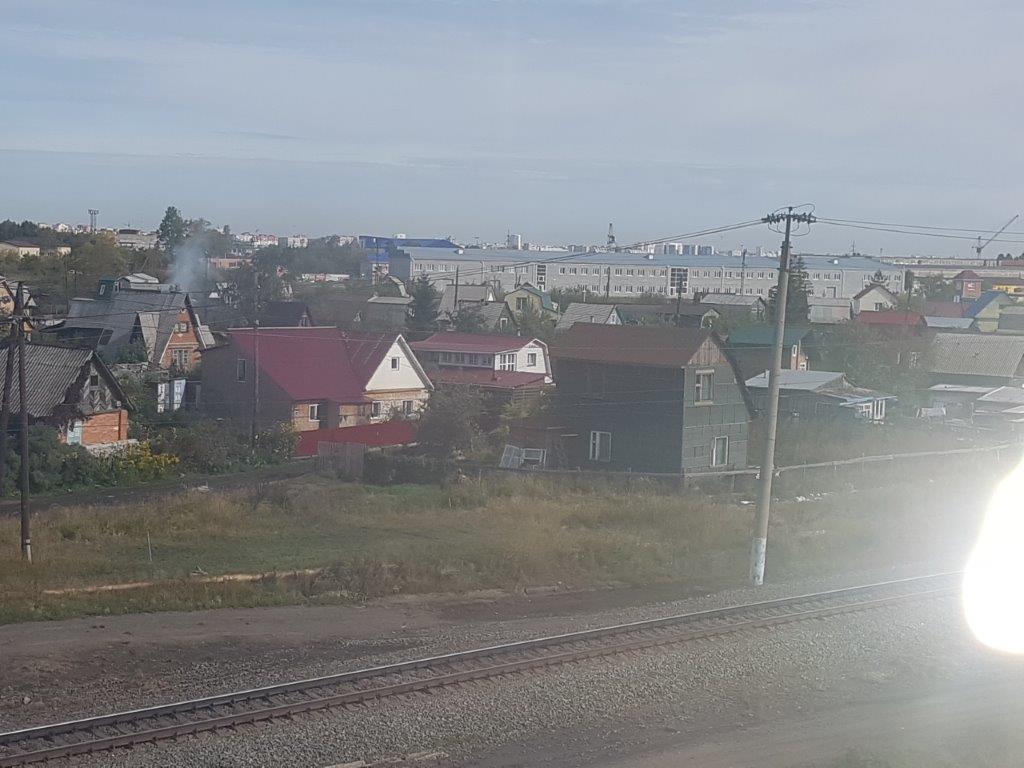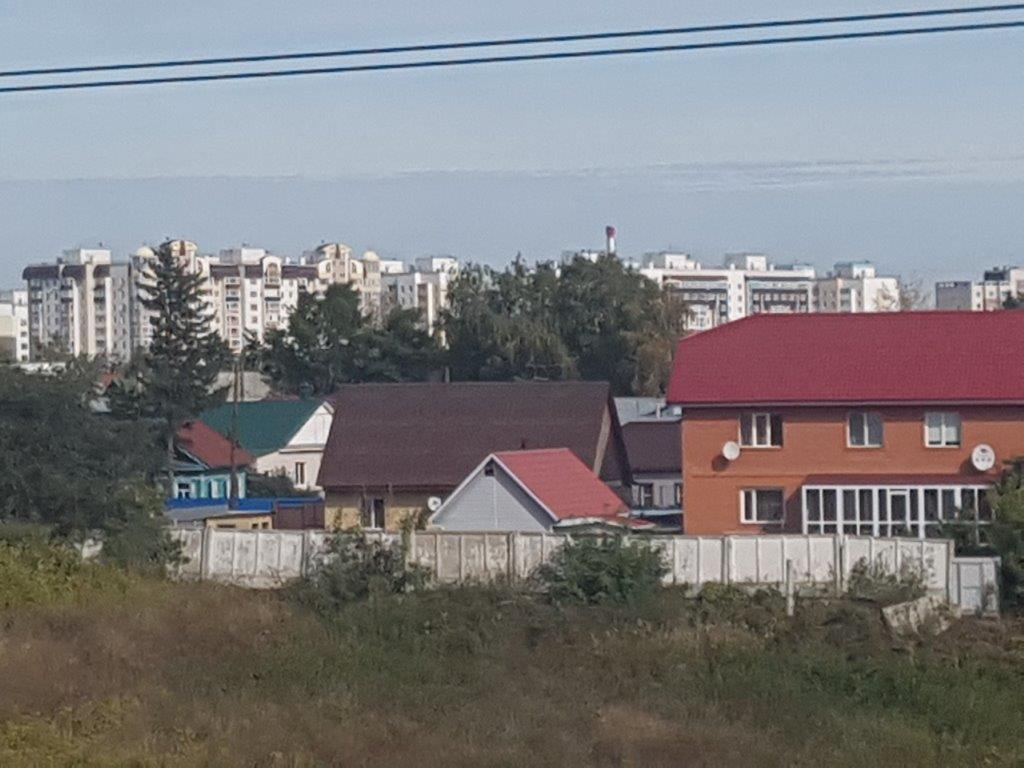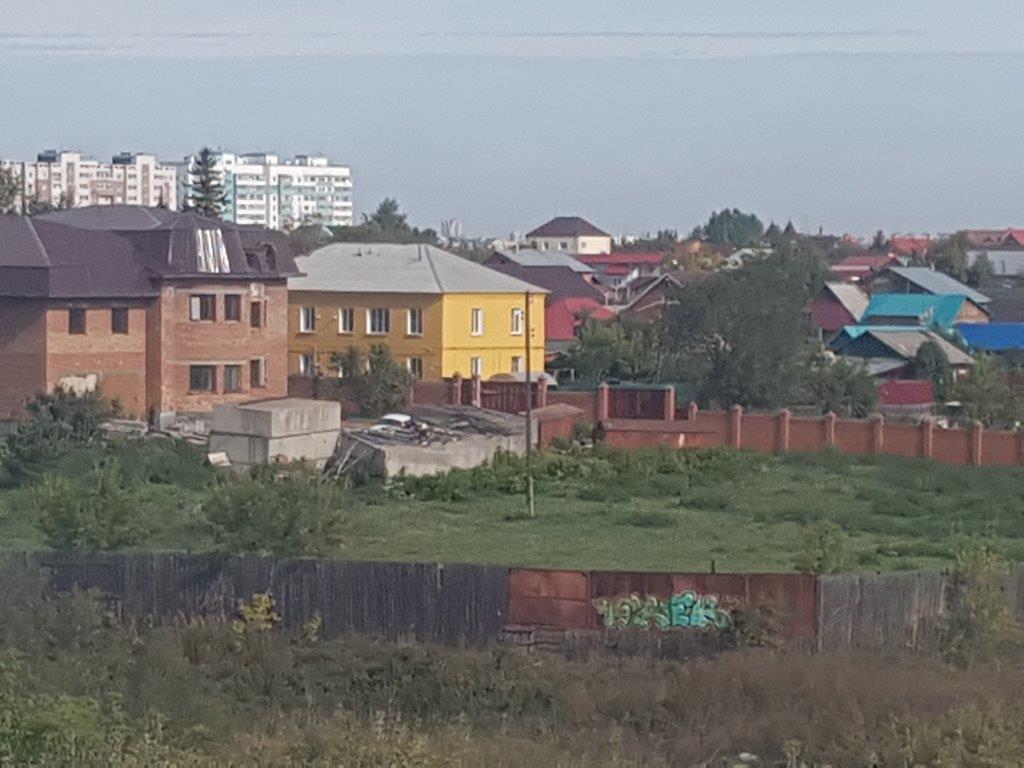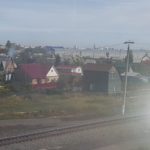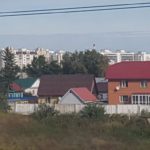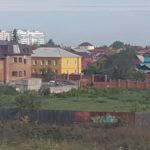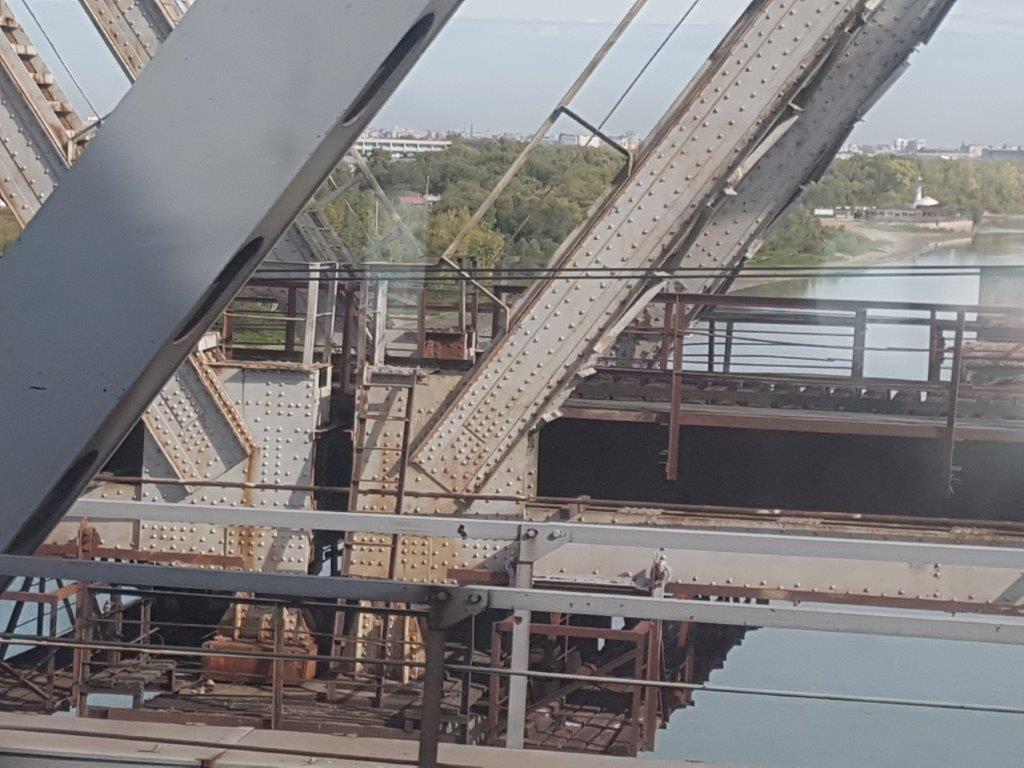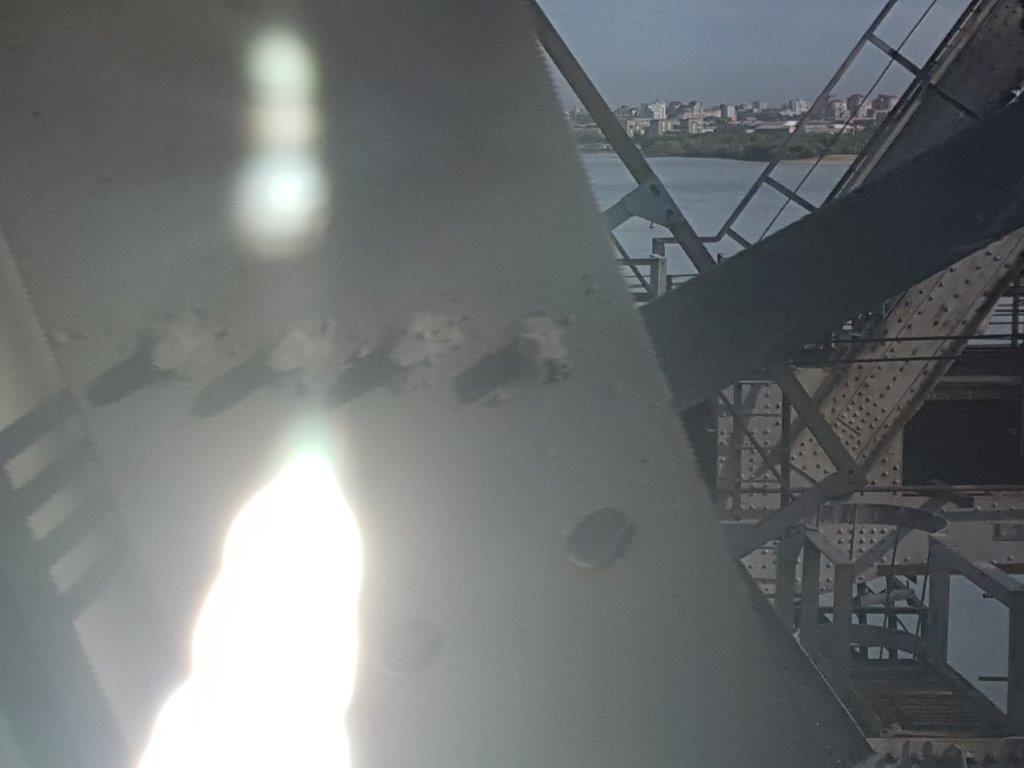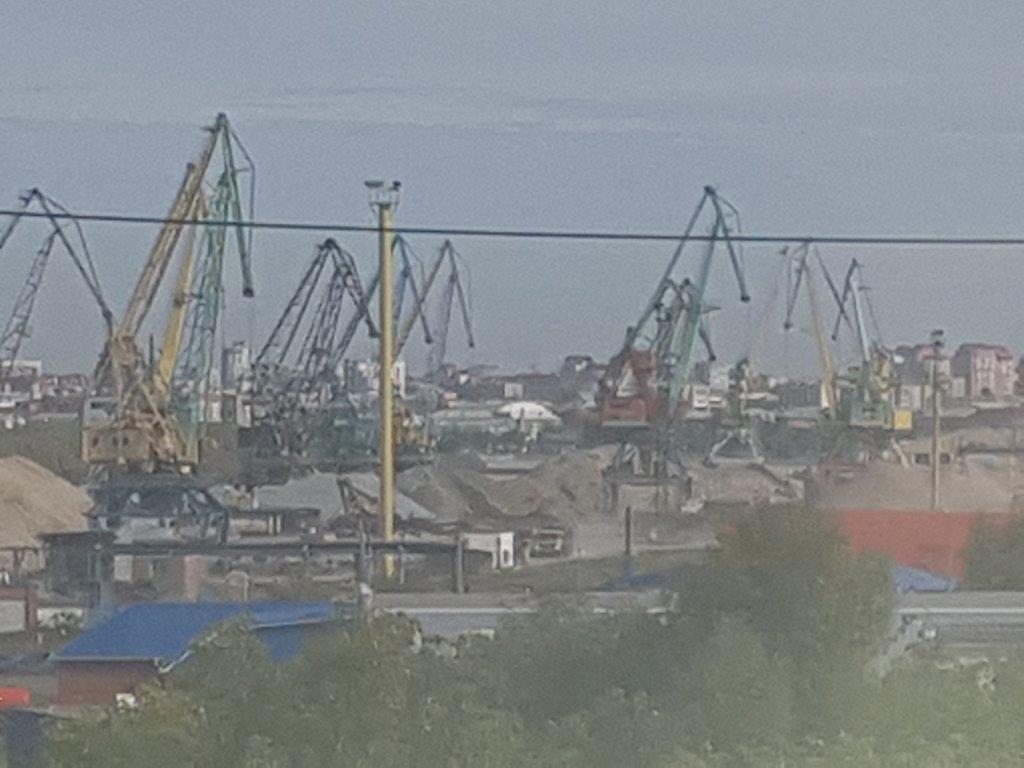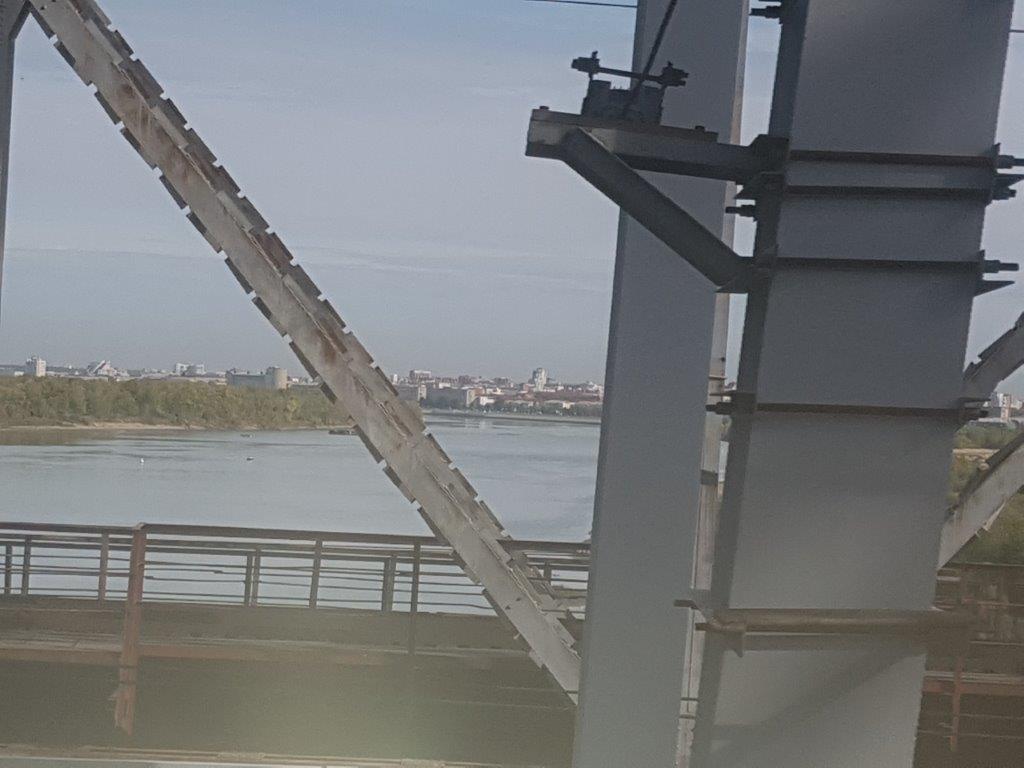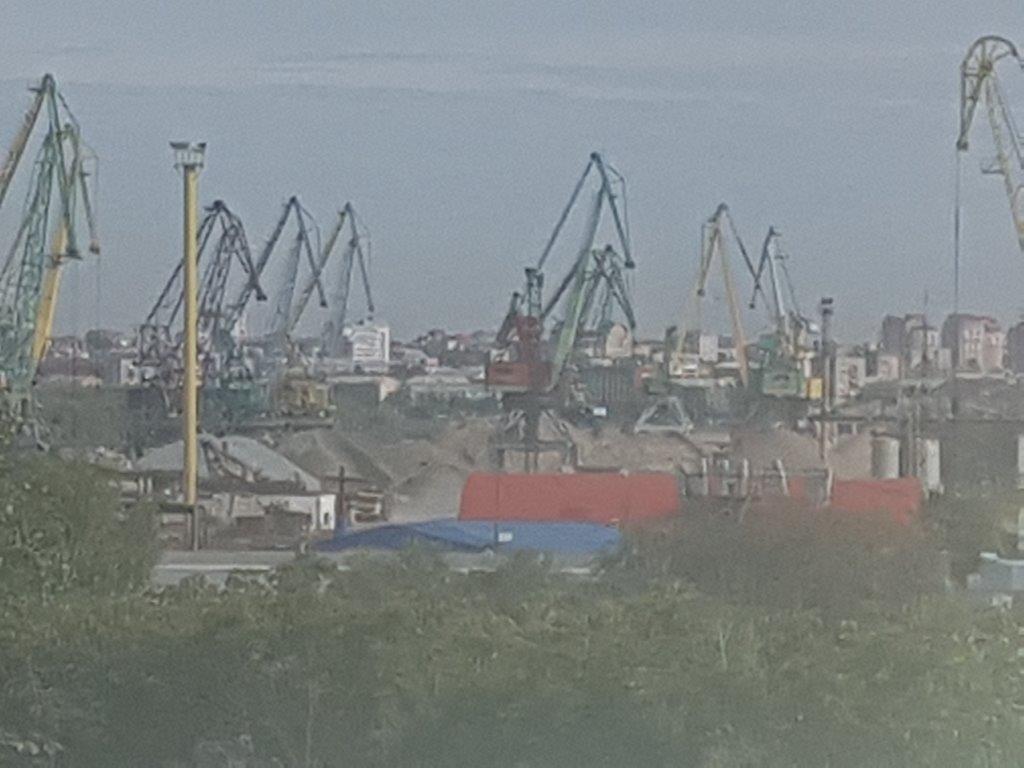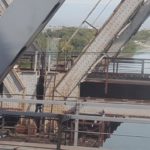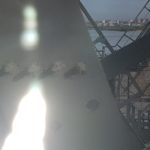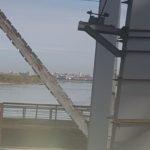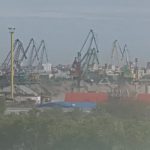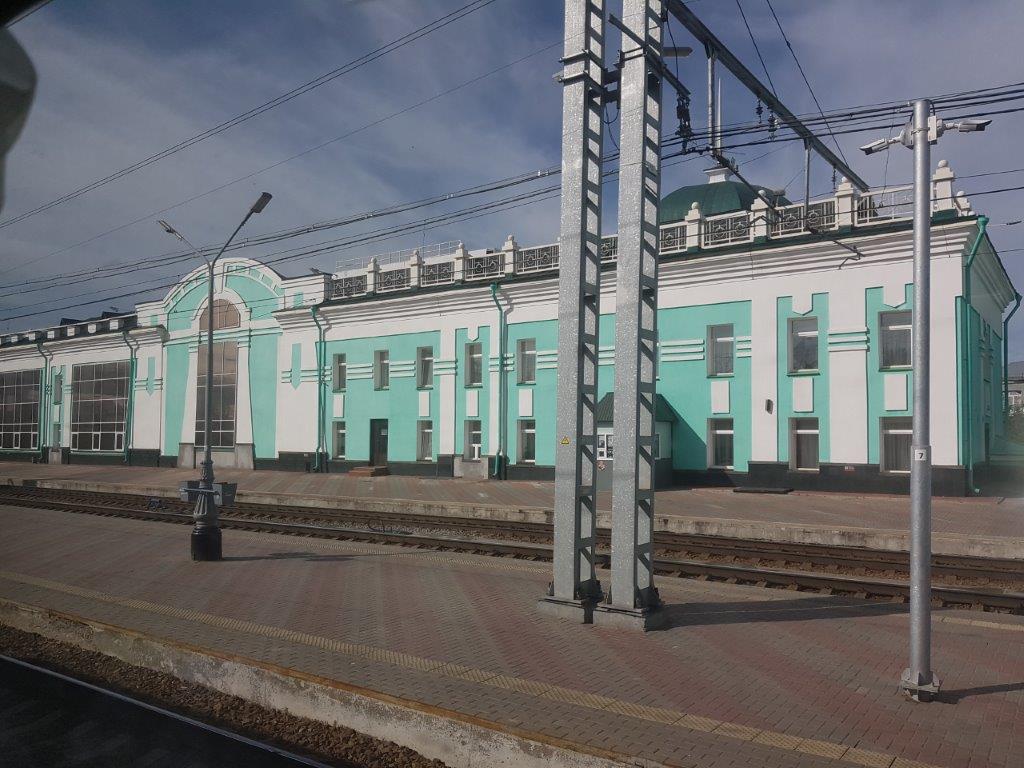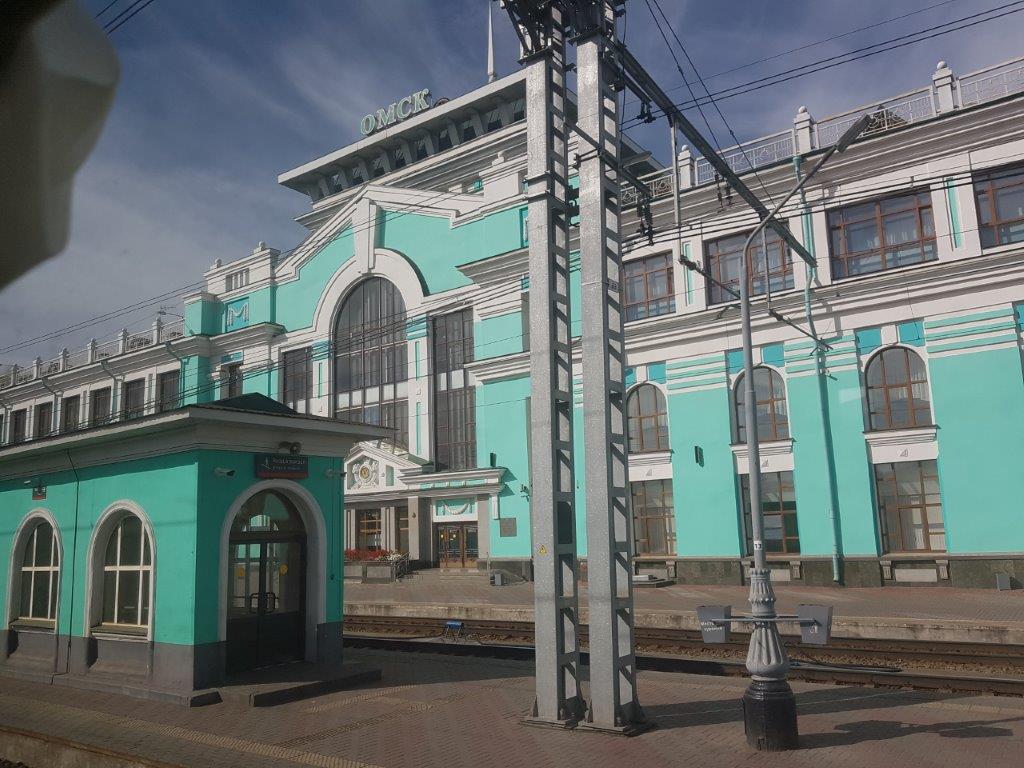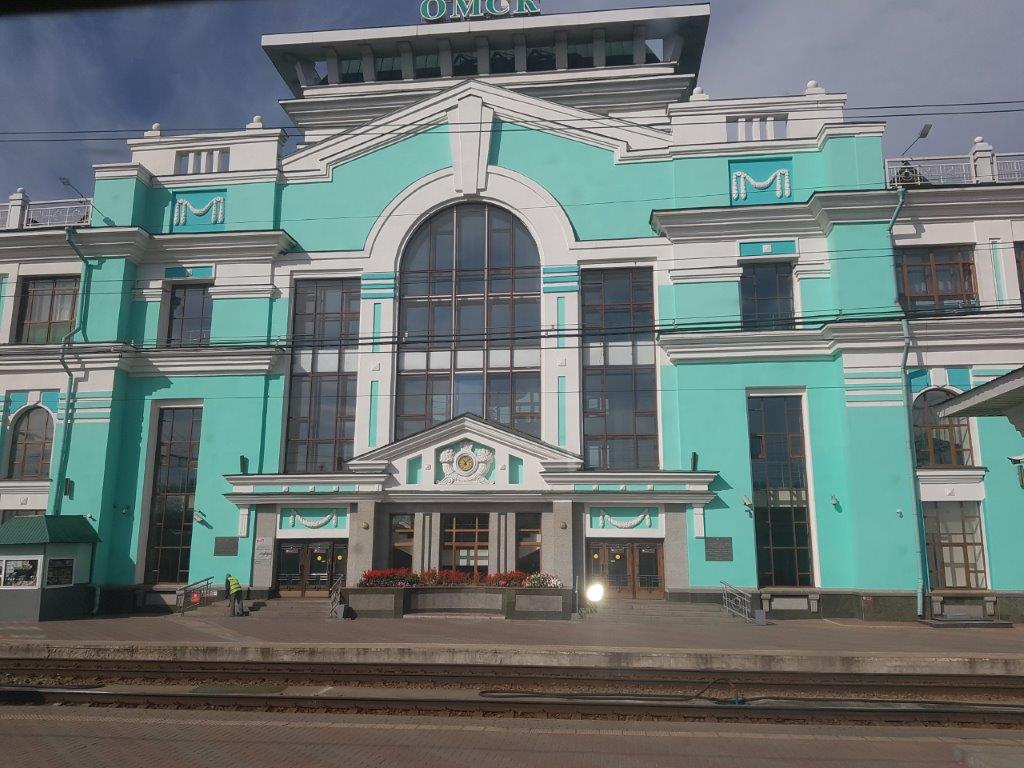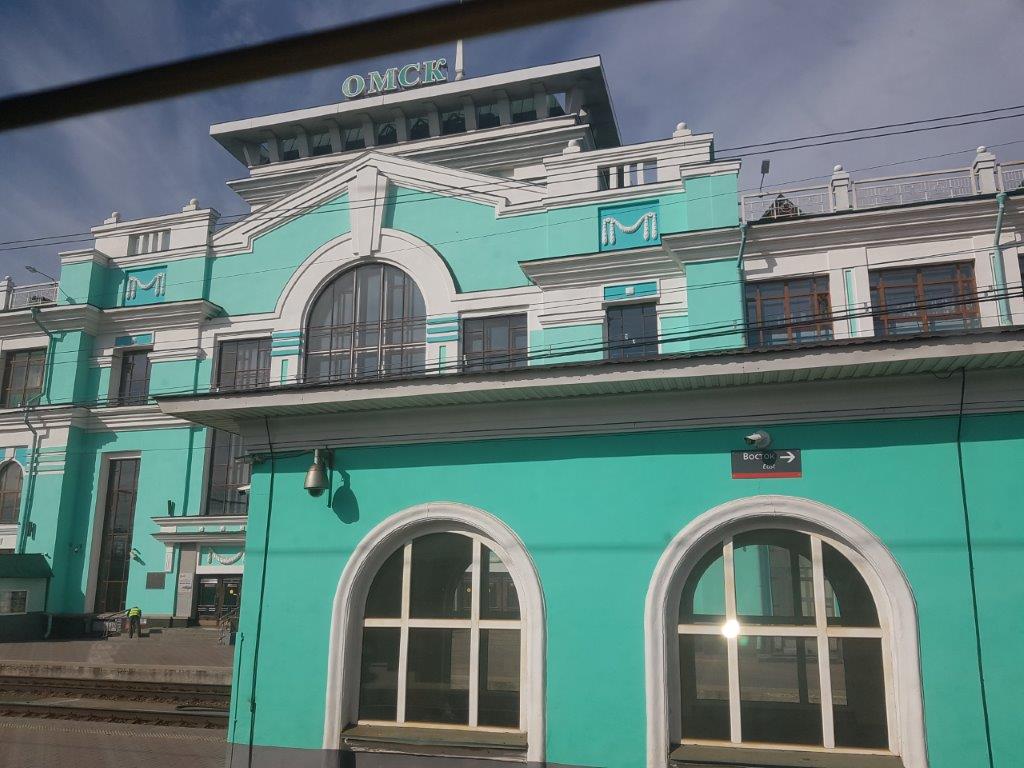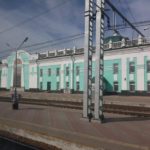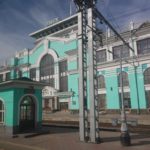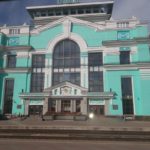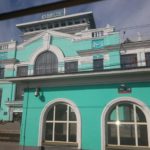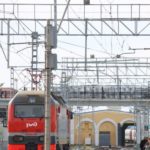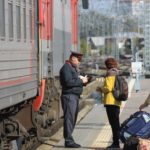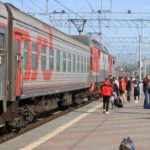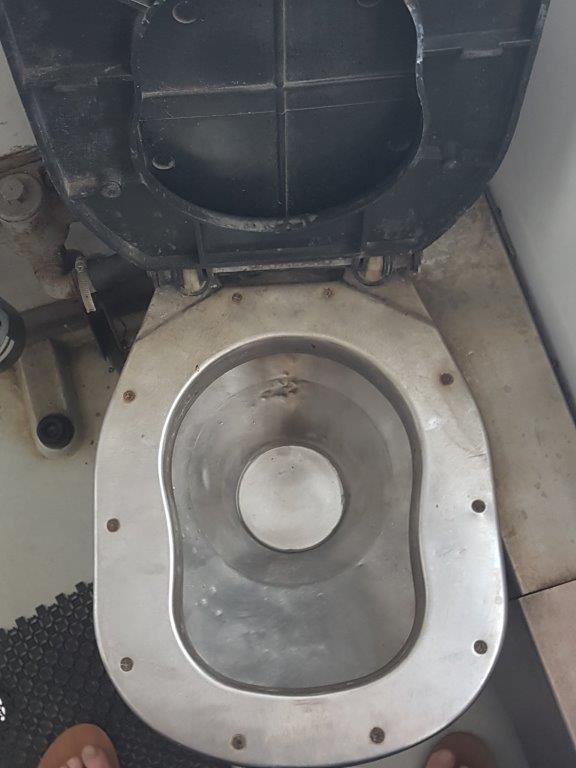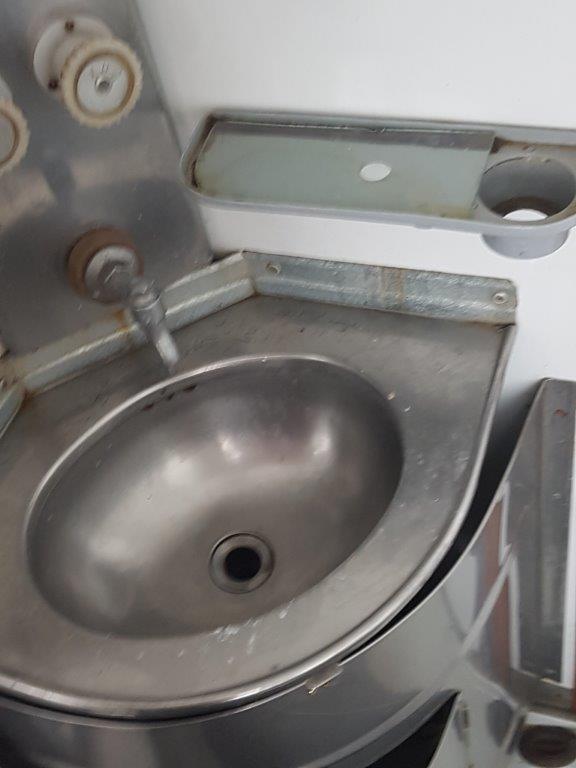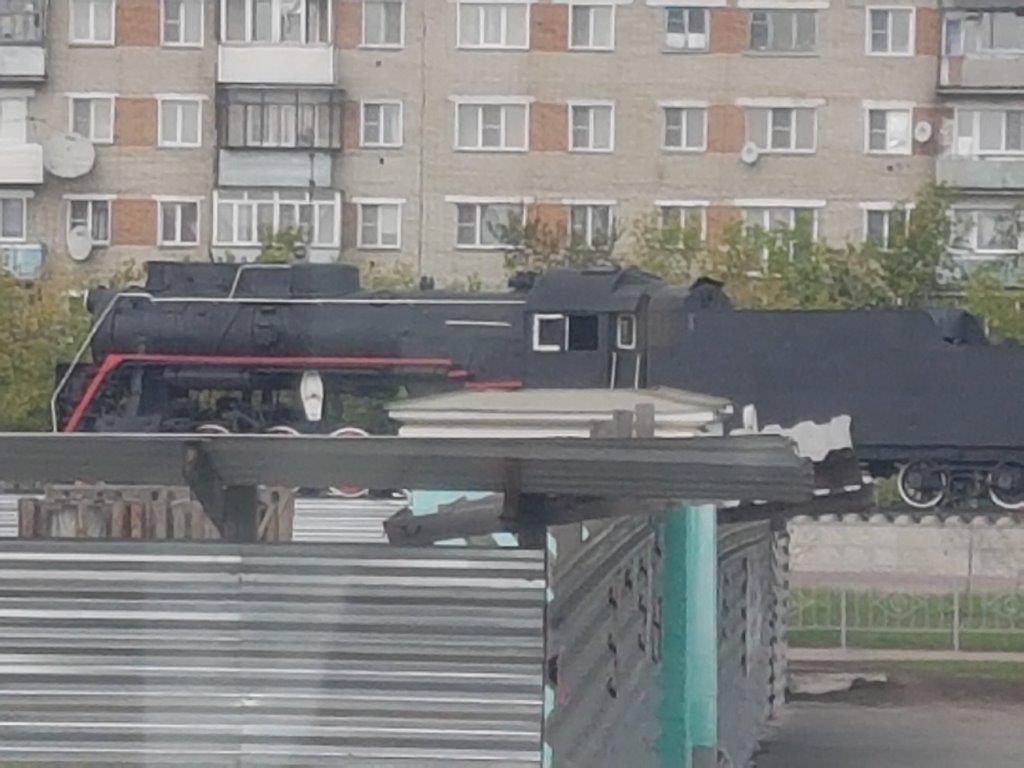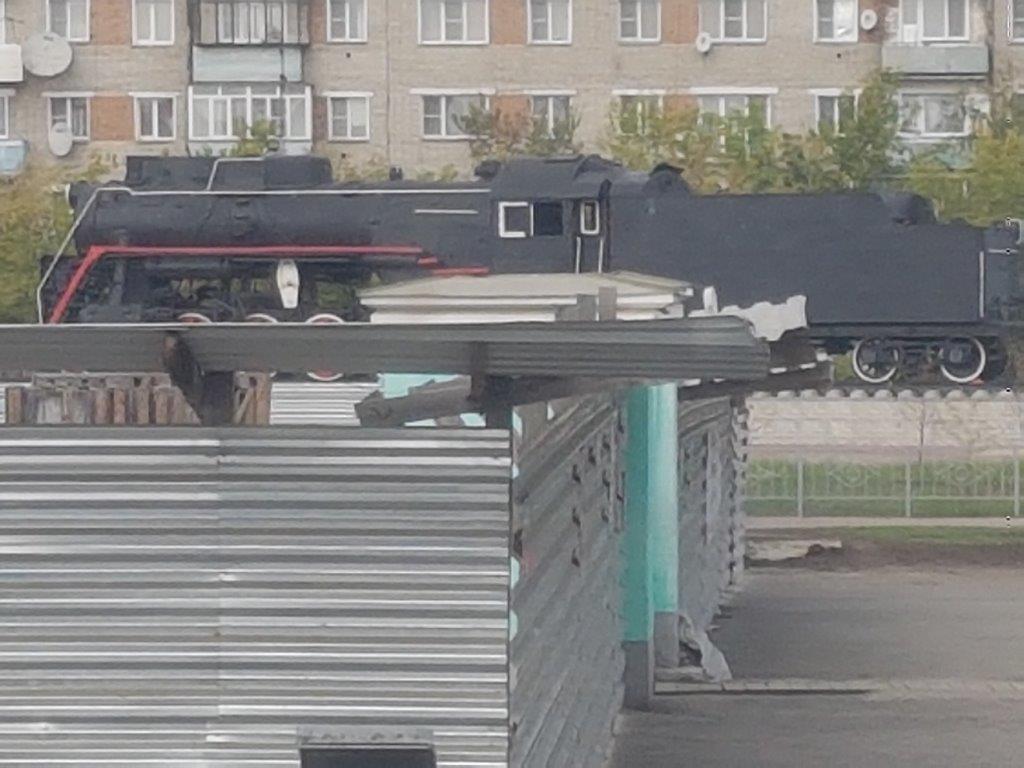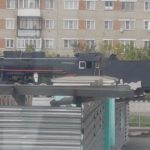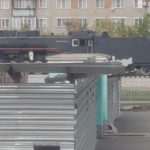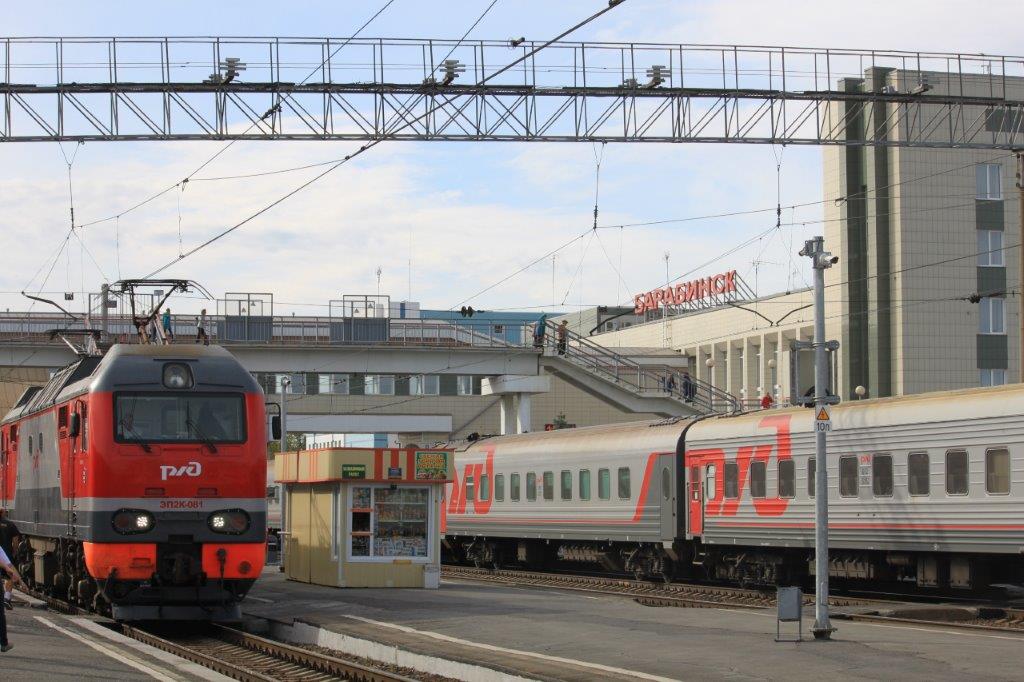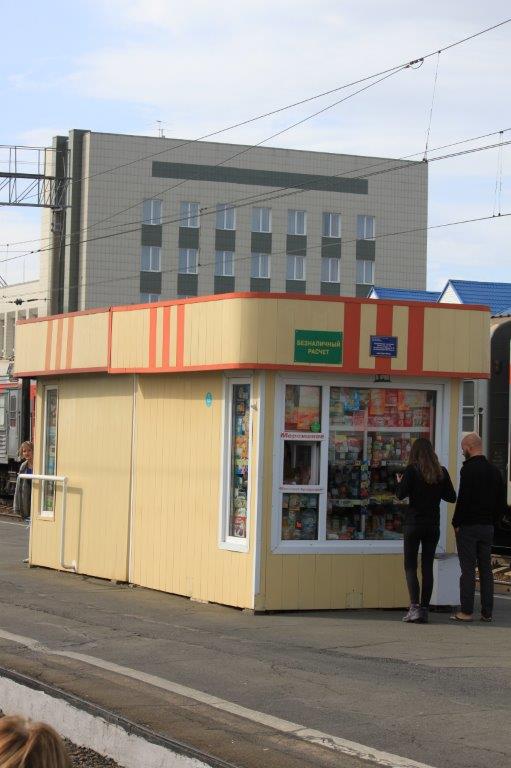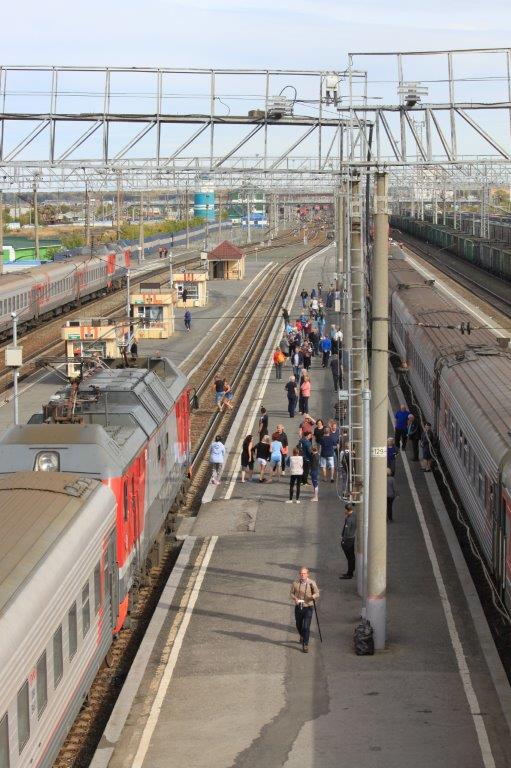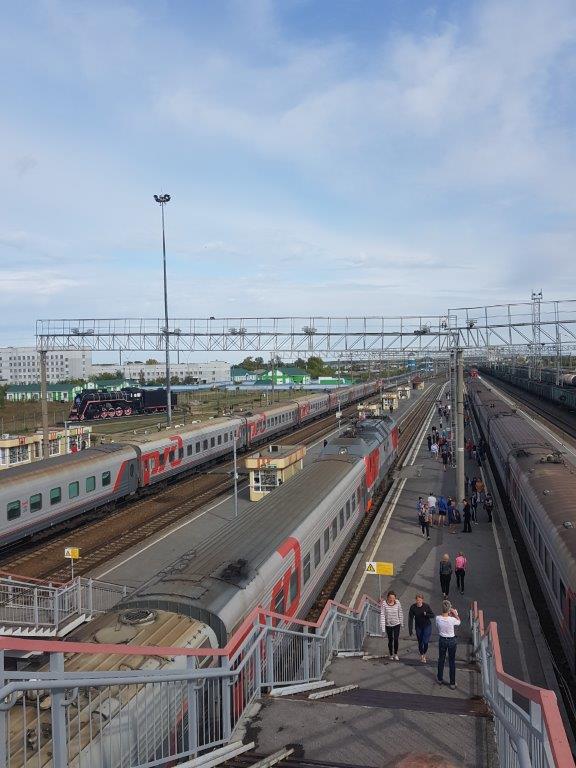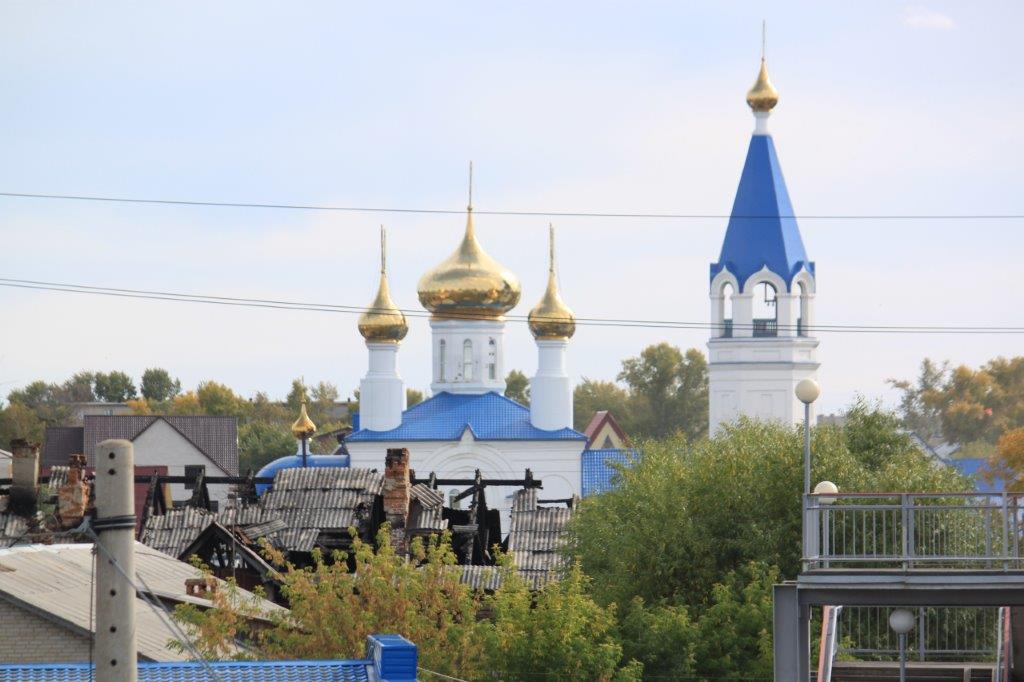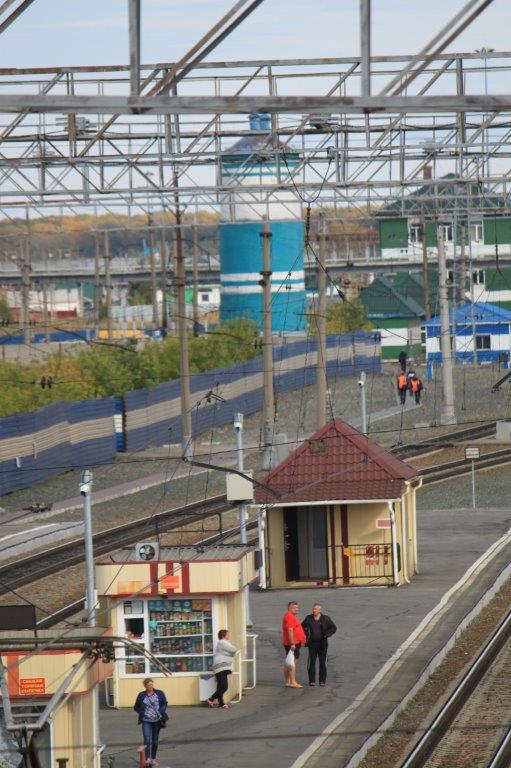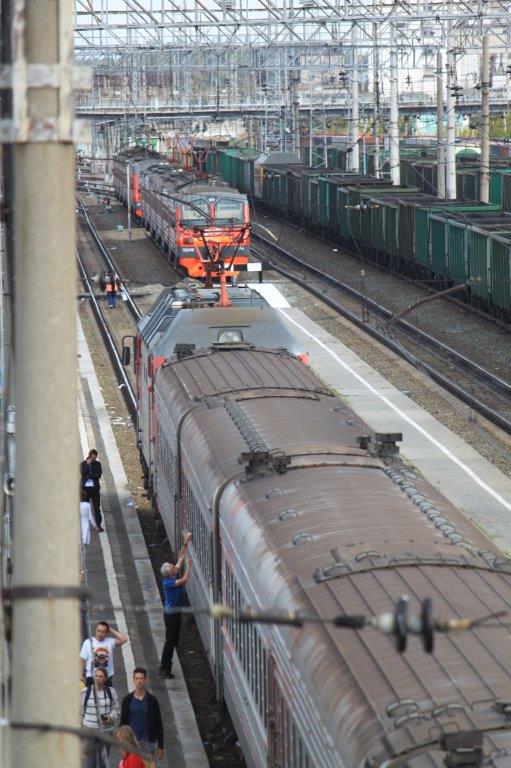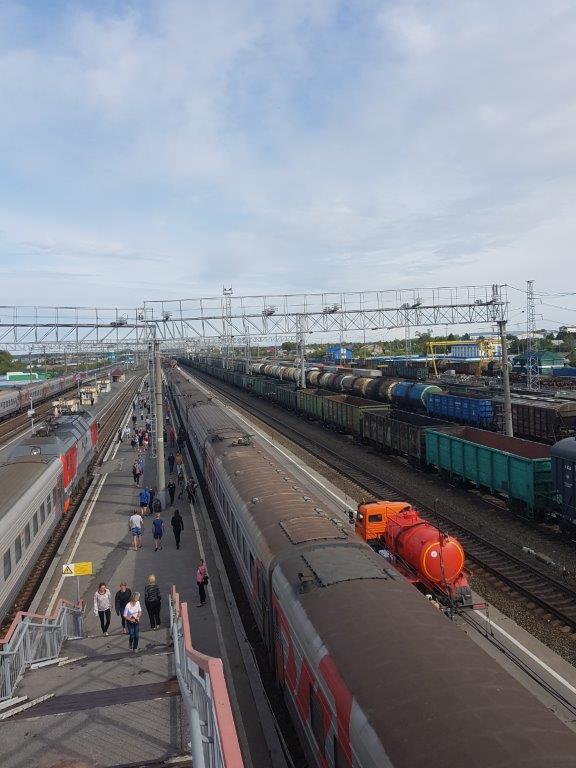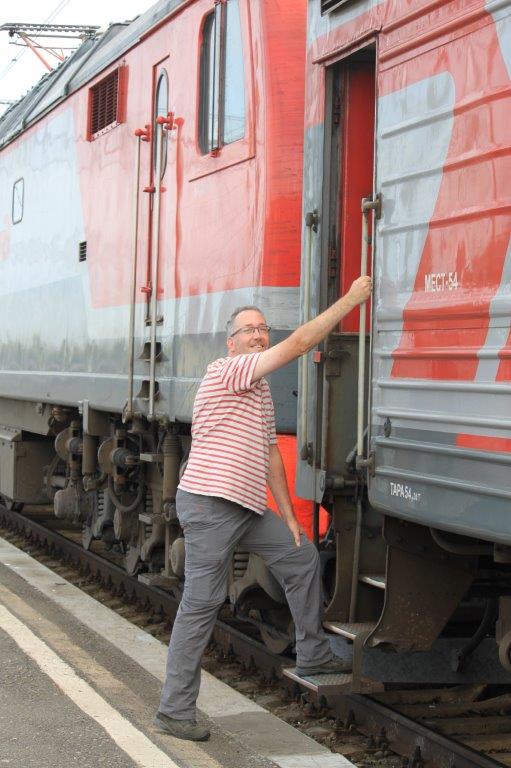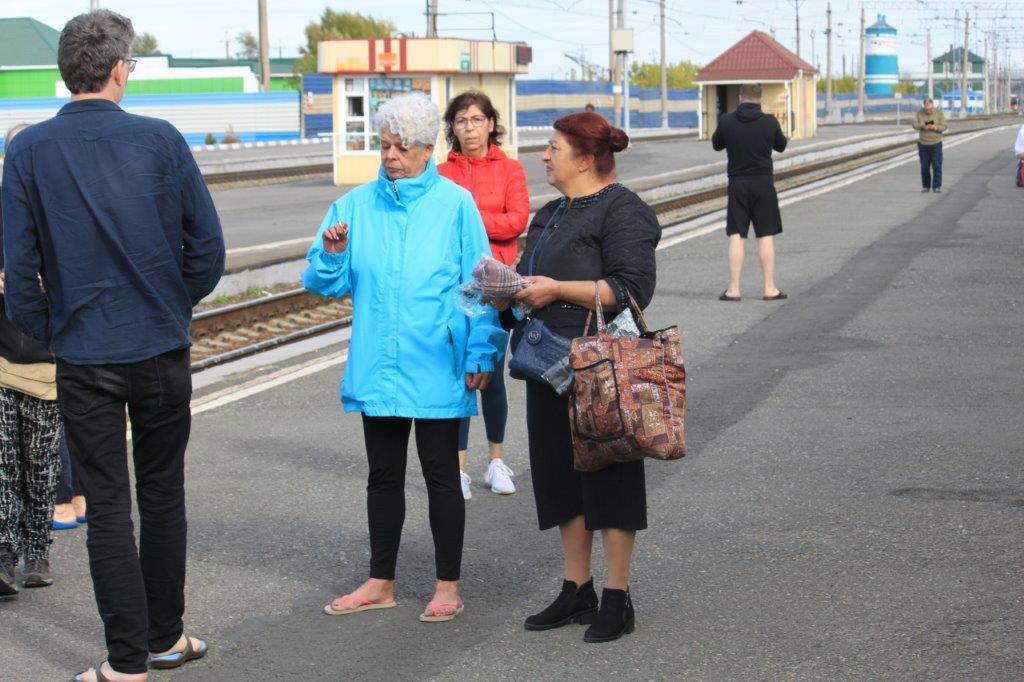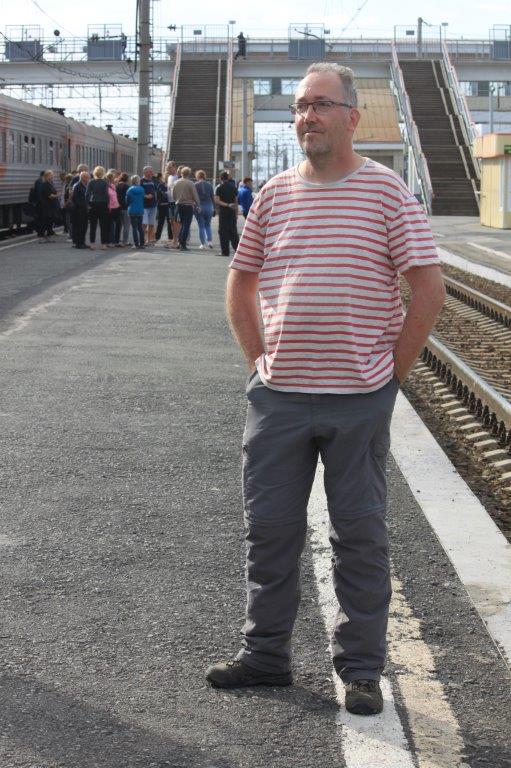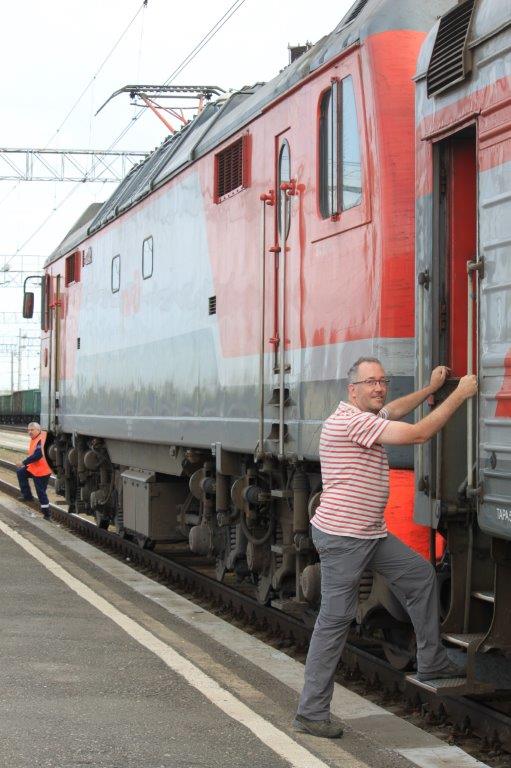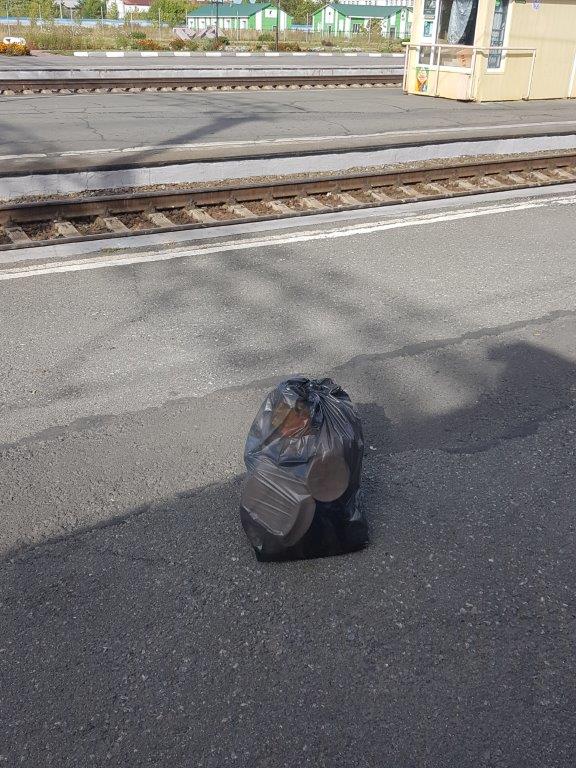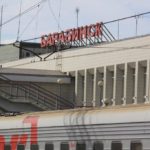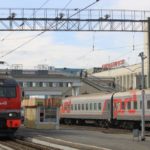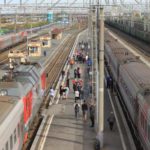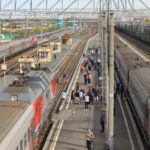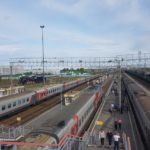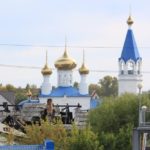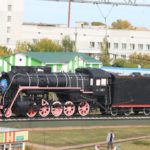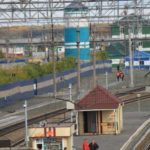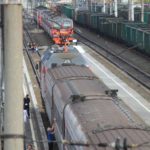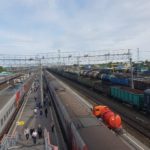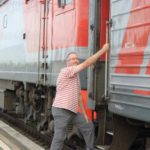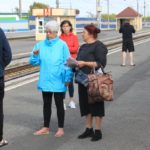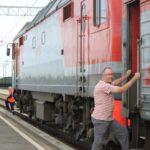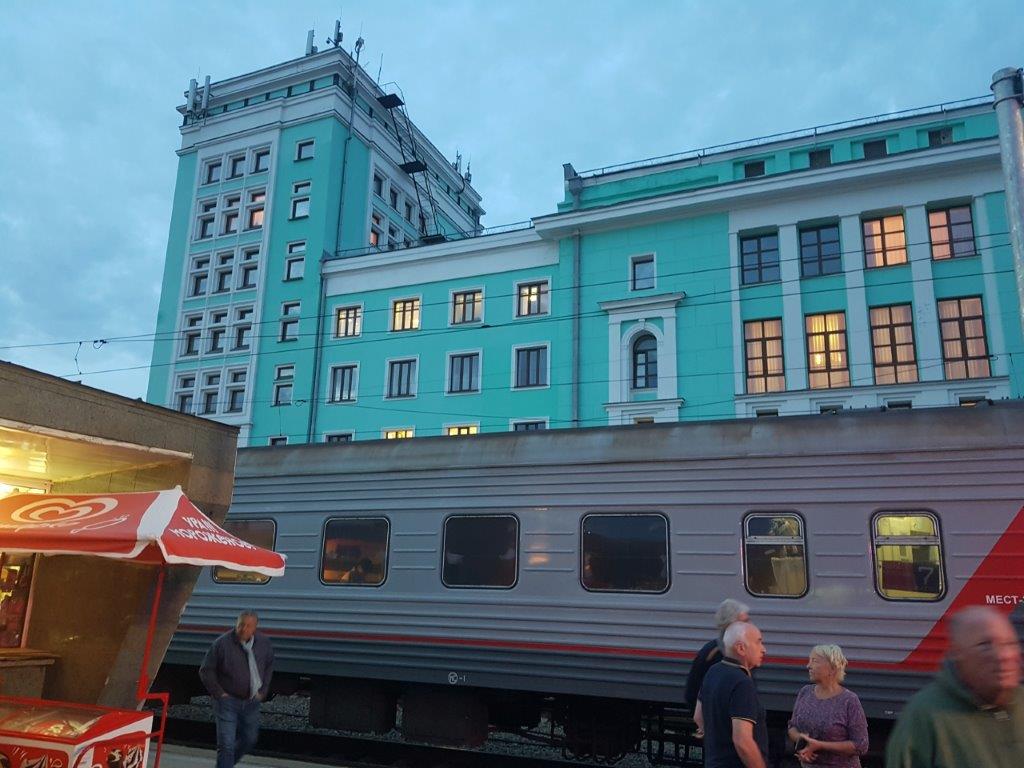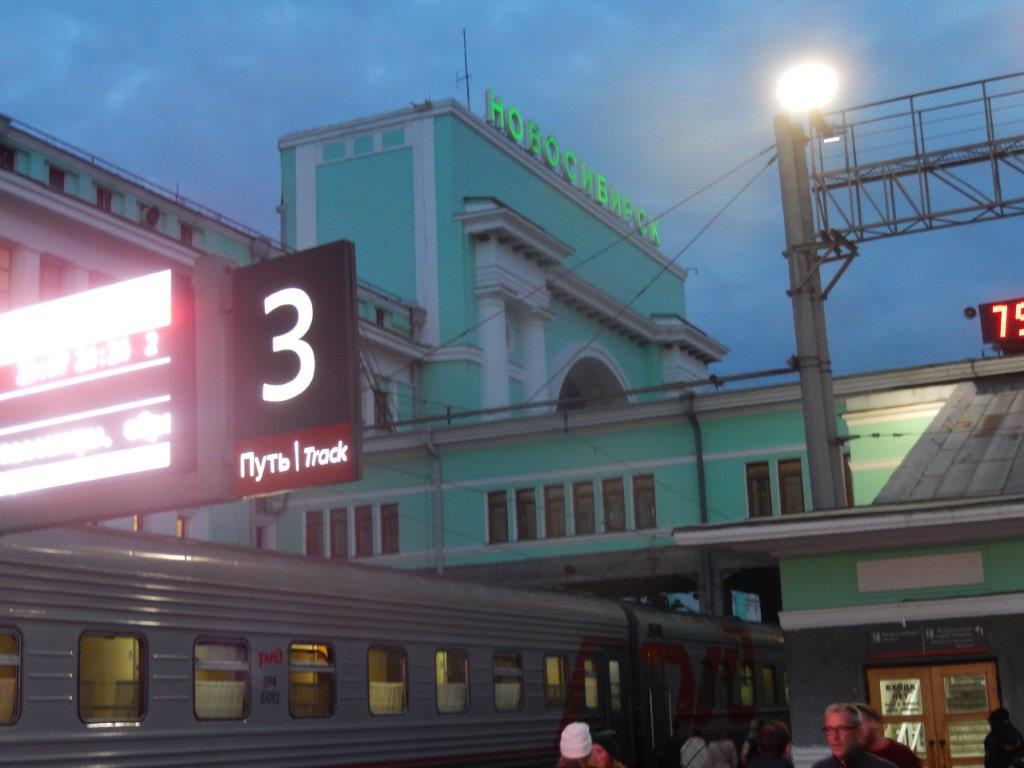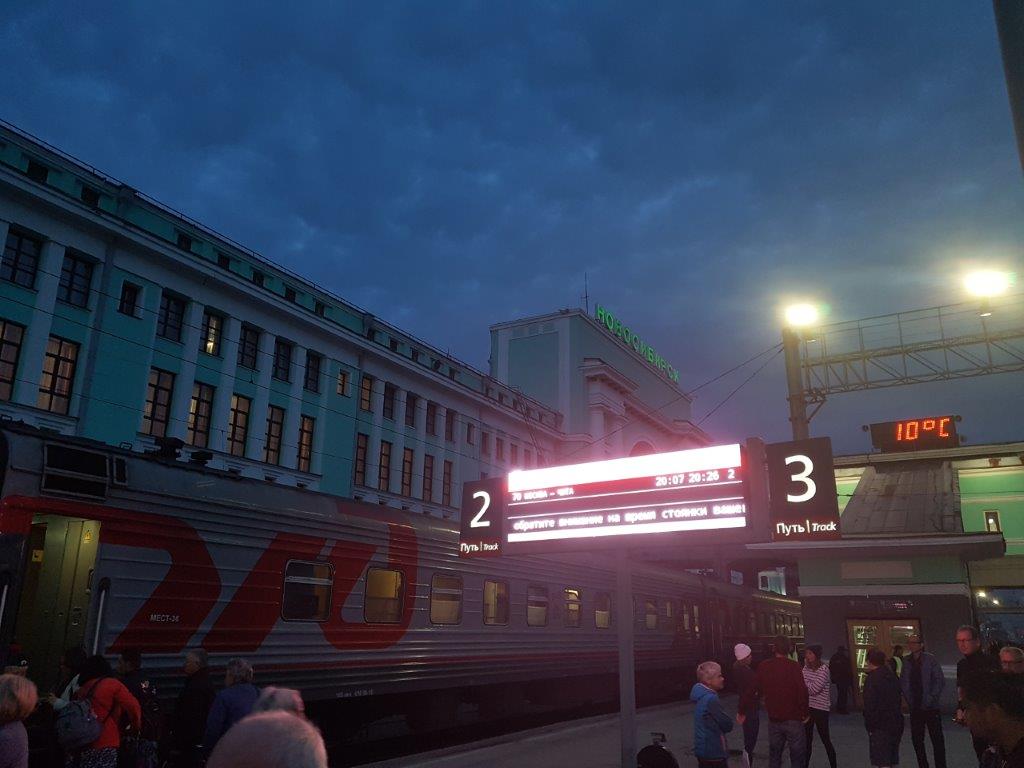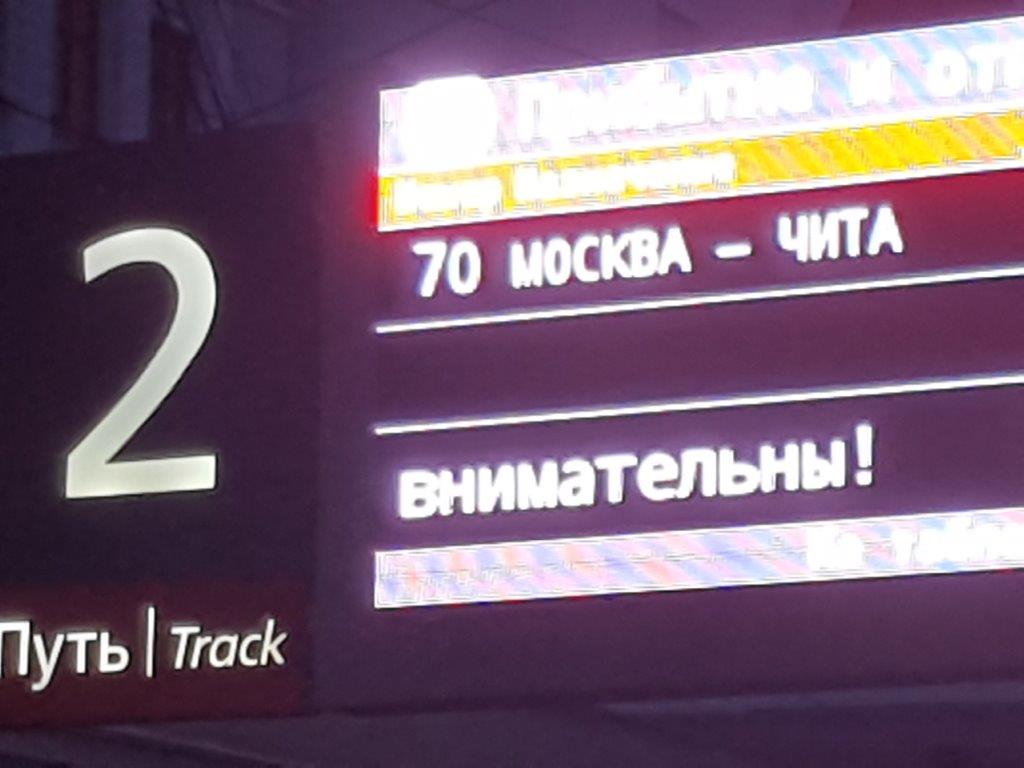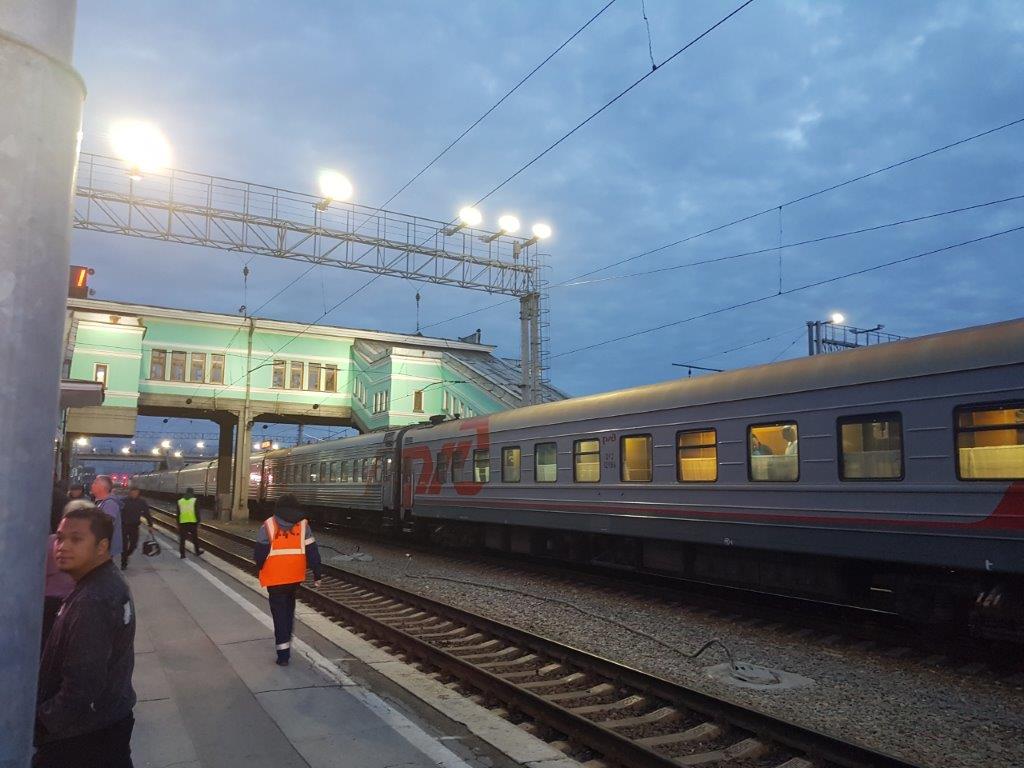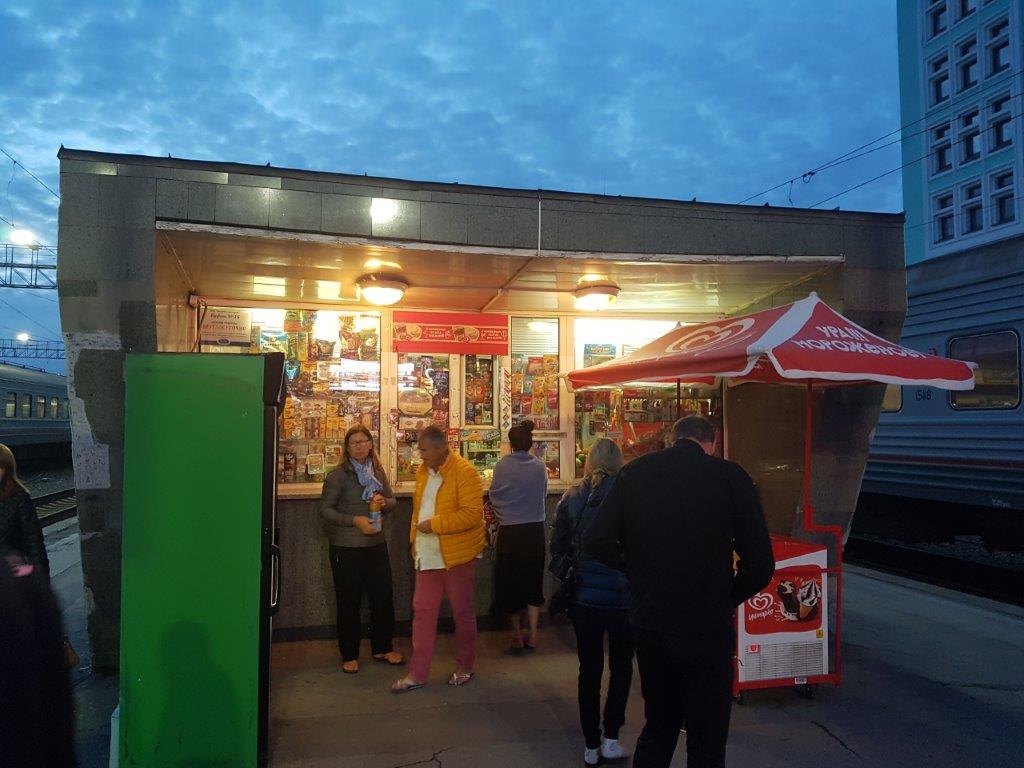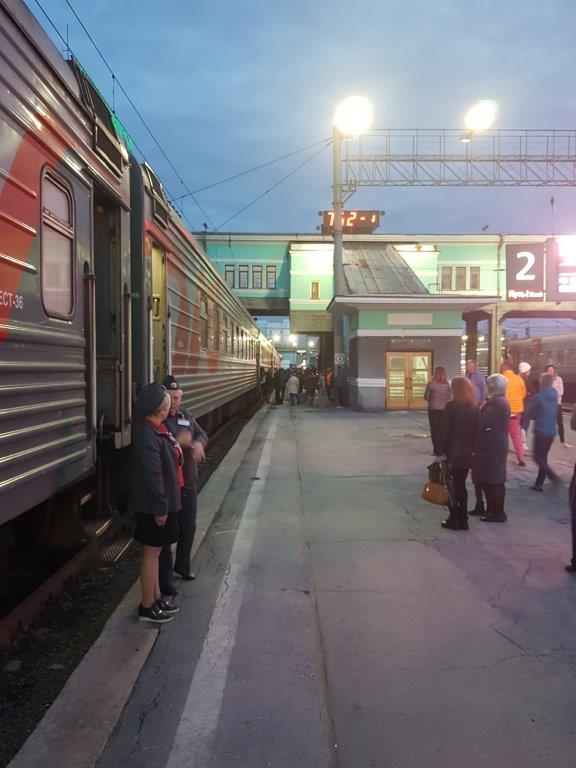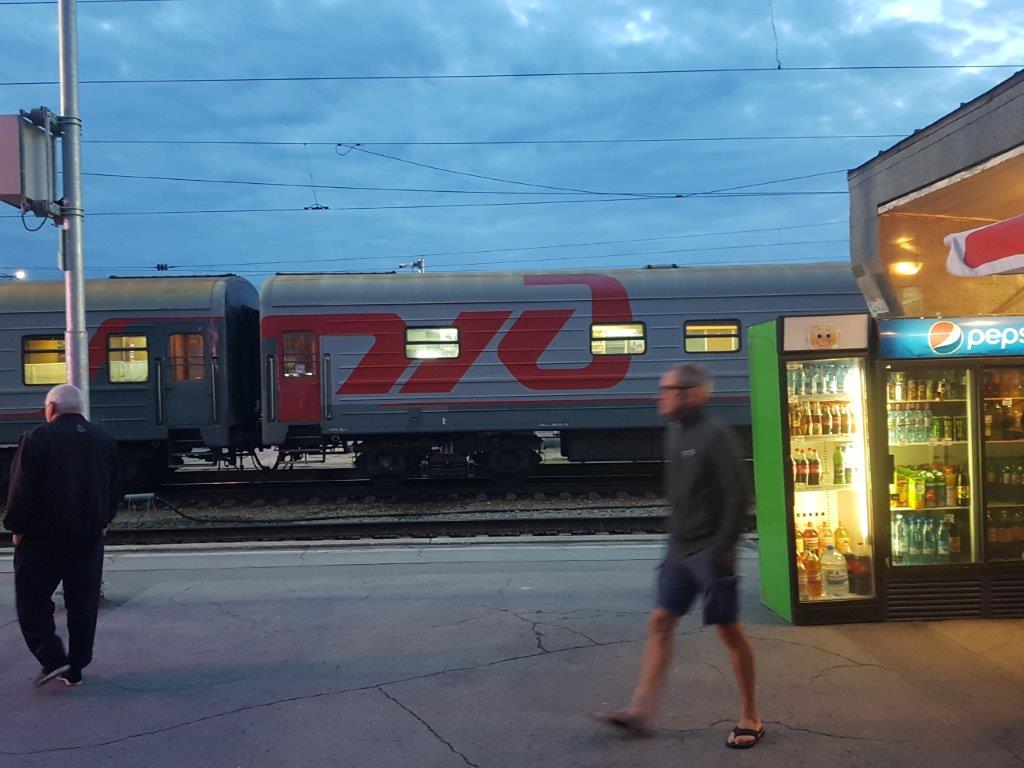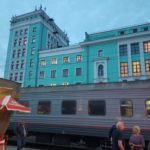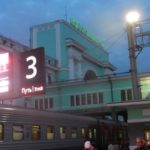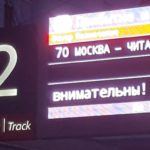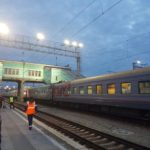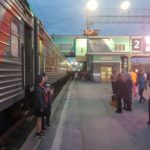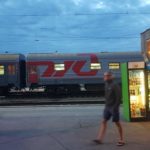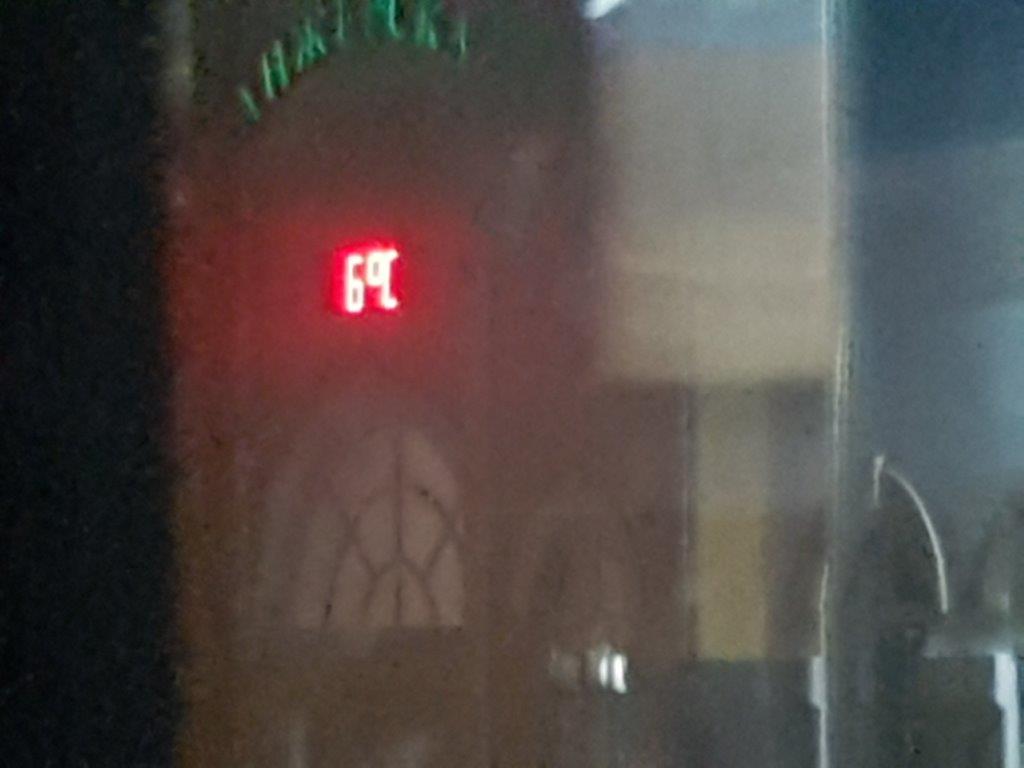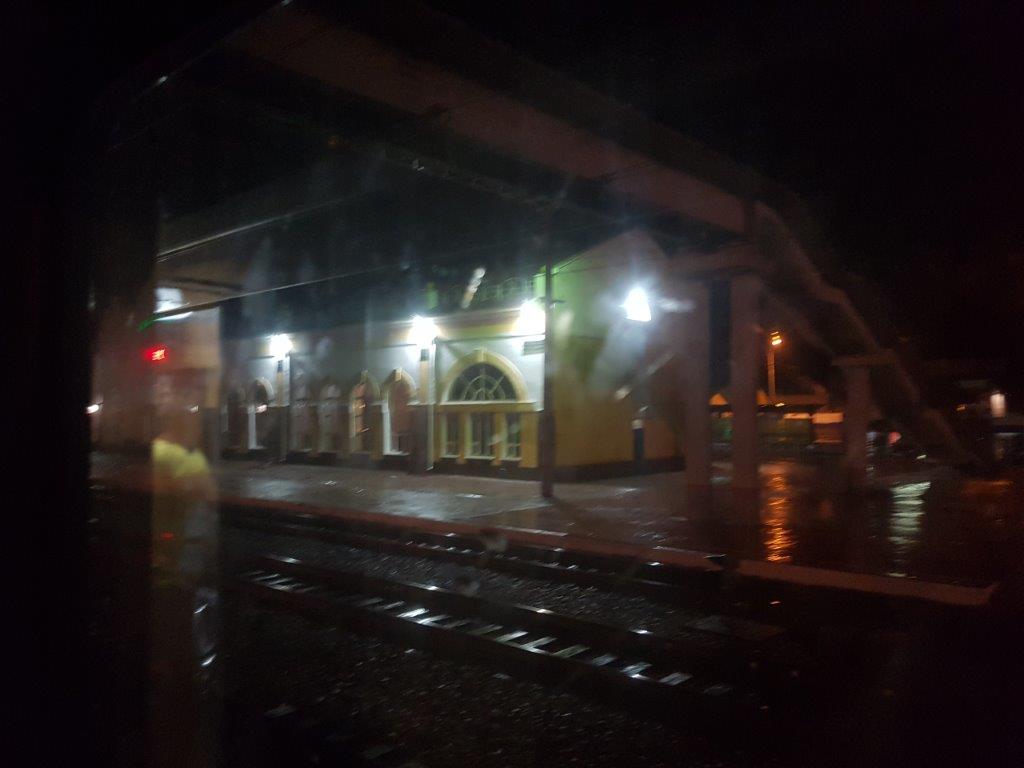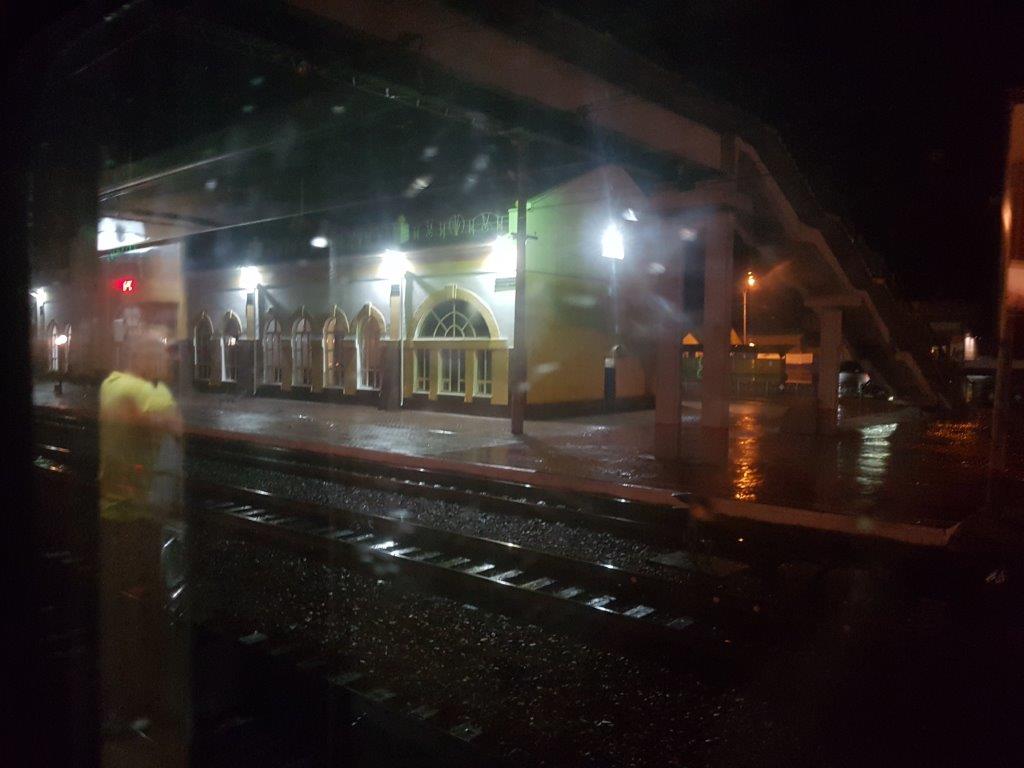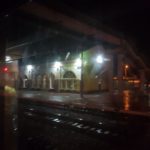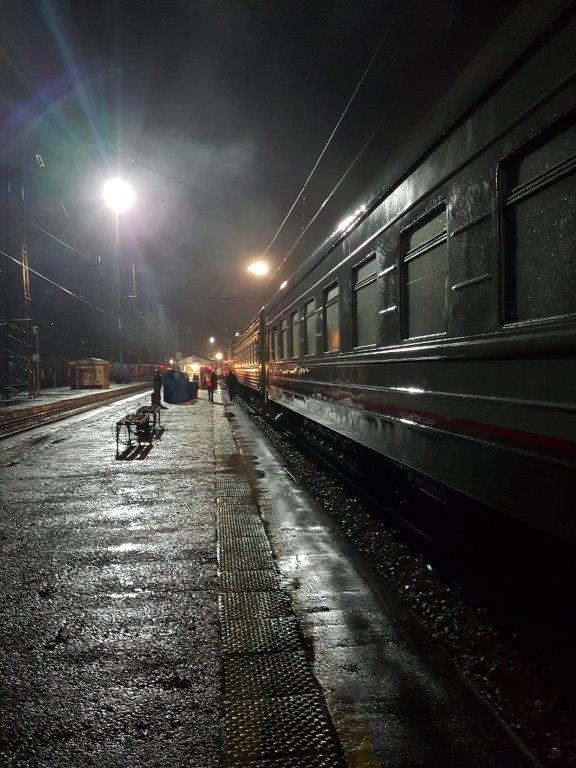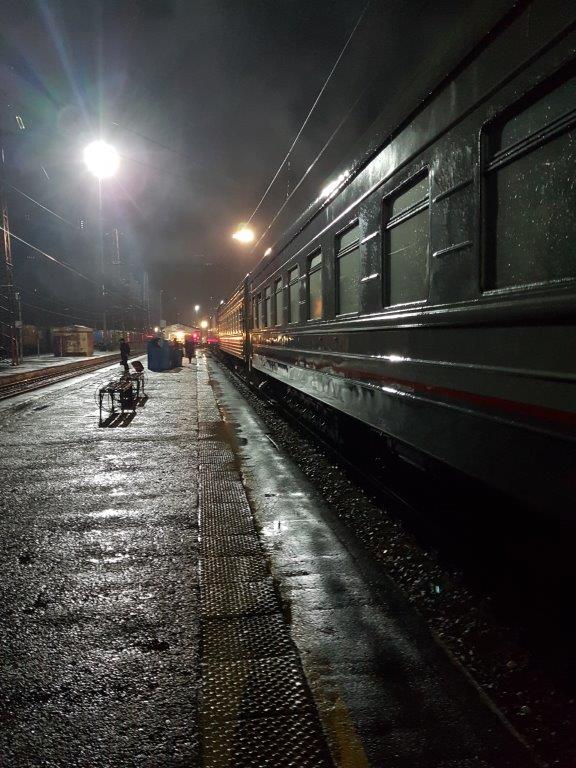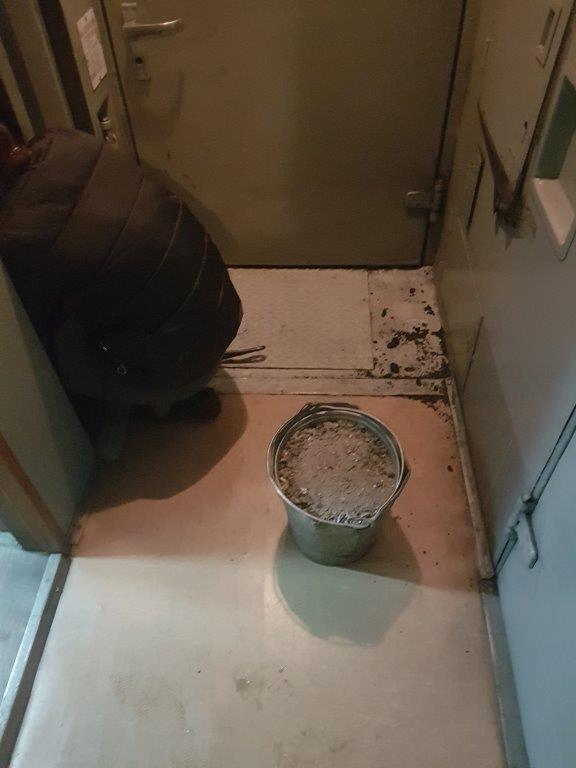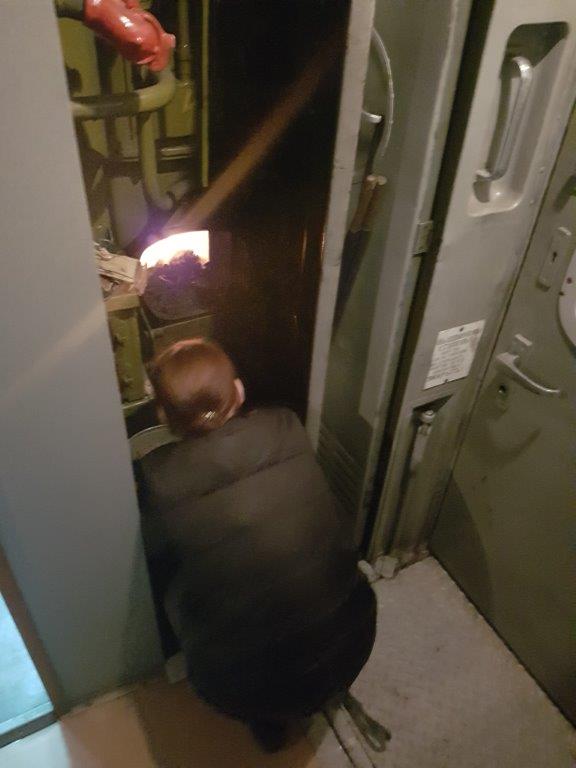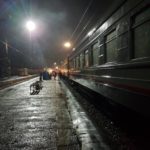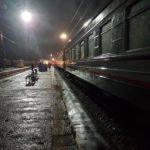The Trans Siberian Express: Yekaterinburg via Omsk and Novosibirsk to Mariinsk (The West Siberian Plain/Lowland)
Finally! The Wandelgek started on the big adventurous journey through Siberia and Mongolia towards the Chinese capital of Beijing.
In this part of the journey there will be much less attention to city trips and citywalks. This part of the journey is actually why The Wandelgek wanted to travel overhere in the 1st place.
Itinerary: Yekaterinburg to Irkutsk
So why did The Wandelgek choose to travel for days through regions of forests that famous Russian playwright Anton Chekhov, who travelled through Siberia towards the Gulag camp on the isle of Sakhalin, described as :
The forest is no denser than at Sokolniki, but no coachman can tell where it ends. It seems endless; it goes on for hundreds of miles…When you are going up a mountain and you look up and down, all you see are mountains in front of you, more mountains beyond them, and yet more mountains beyond them, and mountains on either side, all thickly covered in forest. It’s actually quite frightening.
Anton Chekhov in a letter to his brother (probably the one written on the 5th of June 1890)
or like:
I am driving across the plain of Siberia. I have already driven 715 versts; I have been transformed from head to foot into a great martyr. This morning a keen cold wind began blowing, and it began drizzling with the most detestable rain. I must observe that there is no spring yet in Siberia. The earth is brown, the trees are bare, and there are white patches of snow wherever one looks…
Anton Chekhov in a letter to madam Kiselyov, written on the 7th of May 1890
or this quote which seems to express the boredom that befalls someone travelling through the Taiga:
“the next day you lookahead once more from a hilltop, and the same view unfolds before your eyes” ” but what lies beyond the forest that stretches on both sides”
or maybe the best of them (remember that in 1890 there was no Trans Siberian Railway):
Only the road in Siberia is consitent, and it is consistently awful
But there are other ways to describe or better to depict Siberia as well. E.g. in one of the very best movies ever made: “Ballada o Soldata” (see my earlier mention of this movie as an inspiration source in: The railroad through the Urals into Asia to Yekaterinburg/Jekaterinenburg) is a simple scene that shows the view, which one of the main characters has, from a train carriage. He only sees trees (mainly birch trees) endlessly passing by and we see his reflection and that of his thoughts, memories in the window. It is of a poetic beauty that maybe is only understandable by people who like me grew up in an environment where there were lots of birch trees. It still is my favorite tree and I love filming and photographing it. I even made a pastiche 🙂
Another movie scene that I always liked was the opening of Doctor Zhivago by Boris Pasternak, in which a very young Youri Zhivago is at the funeral of his mother and while balalaika music accompanies this scene, he looks up and sees the wind blowing through the birch trees. Simple… but poetic.
I always hoped to experience that feeling of travelling through a really endless forest full of similar trees because I think it will encourage (at least some of us) to start reflecting on things, instead of getting bored 😉
Leaving Yekaterinburg
After a quick shower and having gathered his gear at the hotel, The Wandelgek went for the Railway Station of Yekaterinburg …
and after informing from which platform the train would leave…,

The Wandelgek travelled on the Number 70 train from Moscow to Chita, leaving at 21.49 from Yekaterinburg…
he still had some spare time and he decided to visit the luxurious and beautifully decorated 1st floor waiting room which is quite awesome…
It was time to go to the platform and board the train…
 At about 21.50 local time (which is Greenwich Time (UTC) +5, or Moscow Time (MCT +3), the train started to leave the station of Yekaterinburg.
At about 21.50 local time (which is Greenwich Time (UTC) +5, or Moscow Time (MCT +3), the train started to leave the station of Yekaterinburg.
So The Wandelgek is heading deep into Siberia. But what is Siberia? Read more about Siberia in this blogpage: Siberia (Russia).
The next morning The Wandelgek arose while hearing the gentle sound of the wheels on the tracks (kedeng, kedeng, kedeng) and opening the cabin curtains he saw the train was moving through the urban area of Ishim…
Trainlife
In the corridor of each carriage were some time tables that were of much help to give insight in which stations on the road were going to be interesting to leave the train for a few minutes or longer…
 As more and more trained and experienced train travellers, we became better at making constructions that could provide up to 10 instruments varying from electric razors, to mobile phones, battery loaders, power adaptors, powerbanks and photo cameras, getting electricity from only 1 single socket using velcro fasteners and every other piece of tape or belt that could help us with the suspension of the electric instruments and travel world adaptors and multiple power strips with extension cords to divide the electricity as much as possible. This feat would make several Civil Engineers jealous ;-). The longer we travelled by train the more creative we got.
As more and more trained and experienced train travellers, we became better at making constructions that could provide up to 10 instruments varying from electric razors, to mobile phones, battery loaders, power adaptors, powerbanks and photo cameras, getting electricity from only 1 single socket using velcro fasteners and every other piece of tape or belt that could help us with the suspension of the electric instruments and travel world adaptors and multiple power strips with extension cords to divide the electricity as much as possible. This feat would make several Civil Engineers jealous ;-). The longer we travelled by train the more creative we got.
The train meanwhile slowly found its way through the West Siberian Plain or West Siberian Lowland, passing tiny villages now and again, or fields of probably barley. The Western part of Siberia, after leaving the Urals behind, is quite flat…
The West Siberian Plain/Lowland
The West Siberian Plain, also known as Zapadno-sibirskaya Ravnina, (Russian: За́падно-Сиби́рская равни́на) is a large plain that occupies the western portion of Siberia, between the Ural Mountains in the west and the Yenisei River in the east, and by the Altay Mountains on the southeast. Much of the plain is poorly drained and consists of some of the world’s largest swamps and floodplains. Important cities include Omsk, Novosibirsk, Tomsk and Chelyabinsk.
Geography
The West Siberian Plain is located east of the Ural Mountains mostly in the territory of Russia. It is one of the Great Russian Regions and has been described as the world’s largest unbroken lowland—more than 50 percent is less than 100 metres (330 ft) above sea level—and covers an area of about 2.6–2.7 million square kilometres (1.0 million square miles) which is about one third of Siberia, extending from north to south for 2,400 km (1,490 mi), from the Arctic Ocean to the foothills of the Altay Mountains, and from east to west for 1,900 km (1,180 mi) from the Ural Mountains to the Yenisei River.
The plain has eight distinct vegetation regions: tundra, forest-tundra, northern taiga, middle taiga, southern taiga, sub-taiga forest, forest-steppe, and steppe. The number of animal species in the West Siberian Plain ranges from at least 107 in the tundra to 278 or more in the forest-steppe region. The long Yenisei river flows broadly south to north, a distance of 3,530 km (2,195 mi) to the Arctic Ocean, where it discharges more than 20 million litres (5 million gallons) of water per second at its mouth. Together with its tributary Angara, the two rivers flow 5,530 km (3,435 mi). The valley formed by the Yenisei acts as a rough dividing line between the West Siberian Plain and the Central Siberian Plateau. Glacial deposits extend as far south as the Ob-Irtysh confluence, forming occasional low hills and ridges, but otherwise the plain is exceedingly flat and featureless.
Winters on the West Siberian Plain are harsh and long. The climate of most of the plains is either subarctic or continental. Two of the larger cities on the plain are Surgut and Nizhnevartovsk.
Arrival at Omsk
After some hours we arrived in a more urban area which seemed to be the outskirts of Omsk…
 Omsk (Russian: Омск) is a city and the administrative center of Omsk Oblast, Russia, located in southwestern Siberia 2,236 kilometers (1,389 mi) from Moscow. With a population of 1,154,116, it is Russia’s third-largest city east of the Ural Mountains after Novosibirsk and Yekaterinburg, and seventh by size nationally. Omsk acts as an essential transport node, serving as a train station for Trans-Siberian Railway and as a staging post for the Irtysh River.
Omsk (Russian: Омск) is a city and the administrative center of Omsk Oblast, Russia, located in southwestern Siberia 2,236 kilometers (1,389 mi) from Moscow. With a population of 1,154,116, it is Russia’s third-largest city east of the Ural Mountains after Novosibirsk and Yekaterinburg, and seventh by size nationally. Omsk acts as an essential transport node, serving as a train station for Trans-Siberian Railway and as a staging post for the Irtysh River.
Crossing the River Irtysh
And then there was one of these 1st magic moments that make travel by train so much fun. As a young boy I had to learn all those names of large Russian (and Siberian) rivers for Geography and I can honestly tell you that in my wildest dreams I never ever thought of crossing most of these rivers, but meanwhile I already had crossed the River Moskva (which is a small one), the largest river of Europe: the River Volga and now a few kilimeters before Omsk I crossed one of Siberias largest rivers, The Irtysh. It seemed that Omsk had quite a large harbour area on the riverbanks…
The Irtysh is a river in Russia, China, and Kazakhstan. It is the chief tributary of the Ob and is also longest tributary river in the world.
Omsk Railway Station (11.12 to 11.26)
Than, late in the morning, the train finally rolled into Omsk Railway Station. All these large stations seemed to be painted in typical pastel colors, which was also quite common to be used for historic churches, monasteries etcetera in Russian cities.
 Even at a large city like Omsk the train would stop only for about 15 minutes which meant that travellers should not stray to far from that train as it could suddenly go earlier than scheduled without a whistle sign or a warning.
Even at a large city like Omsk the train would stop only for about 15 minutes which meant that travellers should not stray to far from that train as it could suddenly go earlier than scheduled without a whistle sign or a warning.
About 20 minutes later we were en route again, slowly leaving Omsk…
 Trainlife 2
Trainlife 2
There are quite rudimentary toilet facilities on board of a train carriage.
You absolutely need to maintain your balance in this shaking and quaking environment when doing your thing ???
After a session at the toilet it is time to refill that stomach, e.g. with some shrimp flavored noodles?
Arrival at Tatarsk & Tatarskaya Railway Station (14.19-14.21)
 Our trainstop was only for 3 minutes. Not enough to allow travellers to leave the train.
Our trainstop was only for 3 minutes. Not enough to allow travellers to leave the train.
Arrival at Barabinsk Railway Station (15.54-16.24)
 At Barabinsk we had a longer pause of half an hour, to stretch our legs and get some fresh air. I had some time to stroll up and down the platform and to climb the stairs towards one of the pedestrian bridges that cross the tracks high above the trains. There were lots of trains transporting coal and gas or maybe oil. The beautiful Orthodox Church of the Icon of the Mother of God, (I love these lonf desriptive names) with blue roofs and golden domes was visible from the pedestrain bridge. There was a bit time to get some groceries like a can of soft drink, potato chips and a chocolate bar at the tiny, but packed to the ceiling, kiosk
At Barabinsk we had a longer pause of half an hour, to stretch our legs and get some fresh air. I had some time to stroll up and down the platform and to climb the stairs towards one of the pedestrian bridges that cross the tracks high above the trains. There were lots of trains transporting coal and gas or maybe oil. The beautiful Orthodox Church of the Icon of the Mother of God, (I love these lonf desriptive names) with blue roofs and golden domes was visible from the pedestrain bridge. There was a bit time to get some groceries like a can of soft drink, potato chips and a chocolate bar at the tiny, but packed to the ceiling, kiosk
Apart from giving travellers an opportunity to board or unboard, the stop is also an opportunity for the provodnitsas to leave garbage bags at the platform. They are collected in a cart by station employees.
Arrival at Novosibirsk
 Novosibirsk (Russian: Новосиби́рск, li.: “New Siberia”) is the administrative center of Novosibirsk Oblast in Russia. Located in the southwestern part of Siberia on the banks of the Ob River, it is the third-most populous city in Russia (after Moscow and St. Petersburg) as well as the most populous city in Asian Russia, with a population of 1,612,833 as of the 2018 census.
Novosibirsk (Russian: Новосиби́рск, li.: “New Siberia”) is the administrative center of Novosibirsk Oblast in Russia. Located in the southwestern part of Siberia on the banks of the Ob River, it is the third-most populous city in Russia (after Moscow and St. Petersburg) as well as the most populous city in Asian Russia, with a population of 1,612,833 as of the 2018 census.
Crossing the River Ob
The Ob (Russian: Обь, is a major river in western Siberia, Russia, and is the world’s seventh-longest river. It forms at the confluence of the rivers Biya and Katun which have their origins in the Altay Mountains. It is the westernmost of the three great Siberian rivers that flow into the Arctic Ocean (the other two being the Yenisei and the Lena).
The Ob is after the Yenitsey the 2nd longest river of Russia.
Novosibirsk Railway Station (20.07-20.26)
Another 20 minute stop as it was slowly getting dark.
Novosibirsk is a railway station that I hoped to visit because it is not only servicing the Trans Siberia Express, but it is also the station where a rail line branches off towards the South into Kazakhstan. The Wandelgek travelled on this branch before, but much more south, when he travelled from Almaty (Alma Ata) in Kazakhstan via Aktogay to Urumqi in China. See more of that railway journey in this blogpost: The Kazakh Steppes: 40 hours by train from Almati to Dostyq
Trainlife 3
Night fell and The Wandelgek again had some noodles for dinner. There was a restaurant carriage attached and it was fine to go there for a drink. I cannot advise you to go there for food though. My advise is to prepare before getting on the Trans Siberia Express and stuff your backpack with noodles, fruitpulp or grain and nut bars, instant coffee, tea bags, instant soup, etcetera. In the restaurant there was a very small cooking space where all food was prepared. The result was that on the plate there was no distinguishable difference between a meat dish and a fish dish :-0 It didn’t look tasteful either. The Wandelgek skipped dinner at the restaurant carriage, but going there for a drink is a completely other thing. You meet fellow travellers, locals, business men and long distance commuters and it is the easiest location on the train to get into a conversation about Russian history, travel destinations, economics, environmental issues or politics. Another thing which The Wandelgek had prepared partially while still at home was information about the Great Baikal Trail of which he wanted to walk a section. There were however some practical issues which had to be tackled. E.g.: The section he wanted to walk was about 24 kilometers long and it ended in a very small Siberian village with wooden houses and no direct connnection to a city. The Wandelgek had read about the option of a scheduled boat connection, but when he checked that information on a website ( there is a possibility for an internet connection on railway station, but there is no WIFI on the train!), he noticed that boats were only travelling in the tourist season, which had ended. This meant booking a privat boat for the return journey. I discussed this with some of my fellow travellers and my travel guide and there were some very positive results. 1st: There were some fellow travellers who wanted to join in on the walk, some wanted to join me for the complete 24 kilometers, others liked doing a shorter stretch of the trail near the village at the end. This meant that we could share costs for the boat because some of us would use it to get near to the village of Bolshe Koti 🙂 2nd: My travel guide found adresses and phone numbers to book a boat. 3rd: We discovered it was necessary to get permits for entering the National Park, where the trail section was crossing through. Okay that was settled 🙂
The train went on through the night and arrived at a station where there was a stop long enough to get out on the platform for a few minutes…
Arrival at Anzhero-Sudzhensk
 Anzhero-Sudzhensk (Russian: Анже́ро-Су́дженск) is a town in the Kuznetsk Basin in Kemerovo Oblast, Russia, located to the north of the oblast’s administrative center of Kemerovo and to the east of the Tom River, on the route of the Trans-Siberian Railway. Population: 76,646 (2010 Census); 86,480 (2002 Census); 107,951 (1989 Census).
Anzhero-Sudzhensk (Russian: Анже́ро-Су́дженск) is a town in the Kuznetsk Basin in Kemerovo Oblast, Russia, located to the north of the oblast’s administrative center of Kemerovo and to the east of the Tom River, on the route of the Trans-Siberian Railway. Population: 76,646 (2010 Census); 86,480 (2002 Census); 107,951 (1989 Census).
Anzherskaya Railway Station (00.18- 0040)
Temperature had dropped to a mere 6 degrees Celsius as the train stopped for 20 minutes at Anzhero-Sudhenk’s railway station. It was quarter passed midnight and apart from some travellers that were already on the train and who wanted to get some fresh air, there were no other people on the platforms. No sellers of goods either…
Arrival at Mariinsk
 Mariinsk (Russian: Мариинск) is a town in Kemerovo Oblast, Russia, where the Trans-Siberian Railway crosses the Kiya River (Ob’s basin), 180 kilometers (110 mi) northeast of Kemerovo, the administrative center of the oblast. Population: 40,526 (2010 Census); 42,977 (2002 Census); 40,956 (1989 Census); 39,700 (1972).
Mariinsk (Russian: Мариинск) is a town in Kemerovo Oblast, Russia, where the Trans-Siberian Railway crosses the Kiya River (Ob’s basin), 180 kilometers (110 mi) northeast of Kemerovo, the administrative center of the oblast. Population: 40,526 (2010 Census); 42,977 (2002 Census); 40,956 (1989 Census); 39,700 (1972).
Mariinsk Railway Station (02.19-02.24)
Another brief but quite interesting stop was at the railway station of Mariinsk. The platform looked quite marooned at 2 PM, but there was activity in the train. The provodnitsa was cleaning the oven. She had to remove the ash of burned coal from the ove floor andadd new coal into the oven as well. This oven heated the water in the samovar, the water and the water in the heating system as well.
There was also cargo traffic which obviously went on through the night as well as the Trans Siberian Express did.
The Wandelgek boarded the train and went for a last time to the restaurant carriage.
After this day filled with railway station, trains, tracks and landscapes paasing by, The Wandelgek now finished his last drink at the restaurant carriage and went for his own carriage and cabin for a good nights rest.






